On 04 November 2017, because of the extended weekend due to Gurpurav, followed by a Sunday, the entire Banjo Family sets out for a weekend trip for a new experience of Discovering our own country. We are headed this time, to seek the blessings, while following the footsteps of Buddha, Mahavir and Sri Ramchandra, and will travel to Bodhgaya, Gaya, Pawapuri, Nalanda and Rajgir in Bihar.
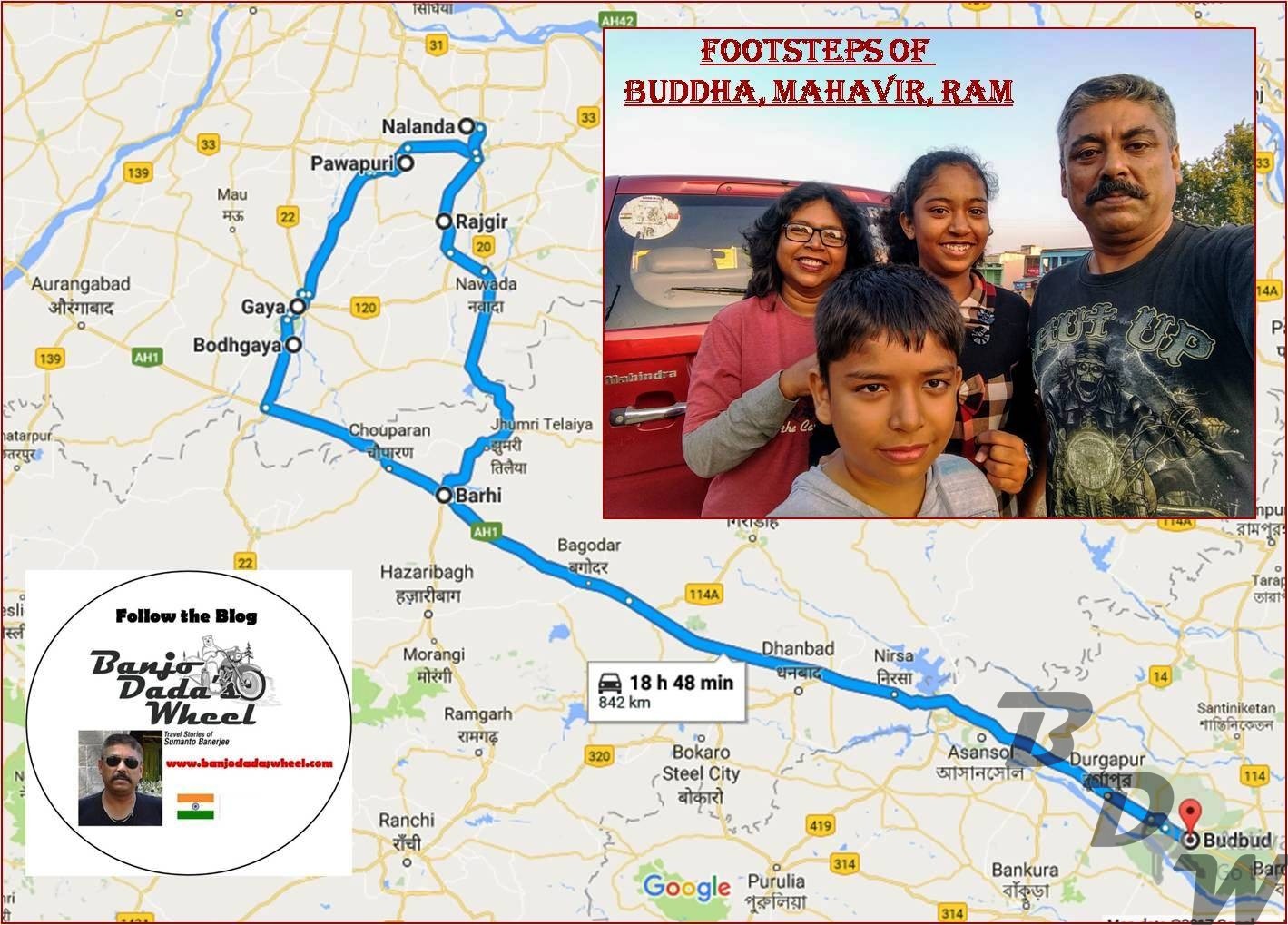
At Bodhgaya.
The crucible of Buddhism, Bodhgaya was where Prince Siddhartha attained enlightenment beneath a bodhi tree 2600 years ago and became Buddha (the ‘Awakened One’). In terms of blessedness, this tiny temple town is to Buddhists what Mecca is to Muslims. Unsurprisingly, it attracts thousands of pilgrims from around the world every year, who come for prayer, study and meditation.
The most hallowed spot in town is the bodhi tree that flourishes inside the Mahabodhi Temple complex, amid a beautiful garden setting, its roots embedded in the same soil as its celebrated ancestor. Additionally, many monasteries and temples dot the town, built in their national style by foreign Buddhist communities. The ambience is a mix of monastic tranquillity, backpacker comforts and small-town hustle, underpinned by an intensity of devotion that makes it endlessly interesting.
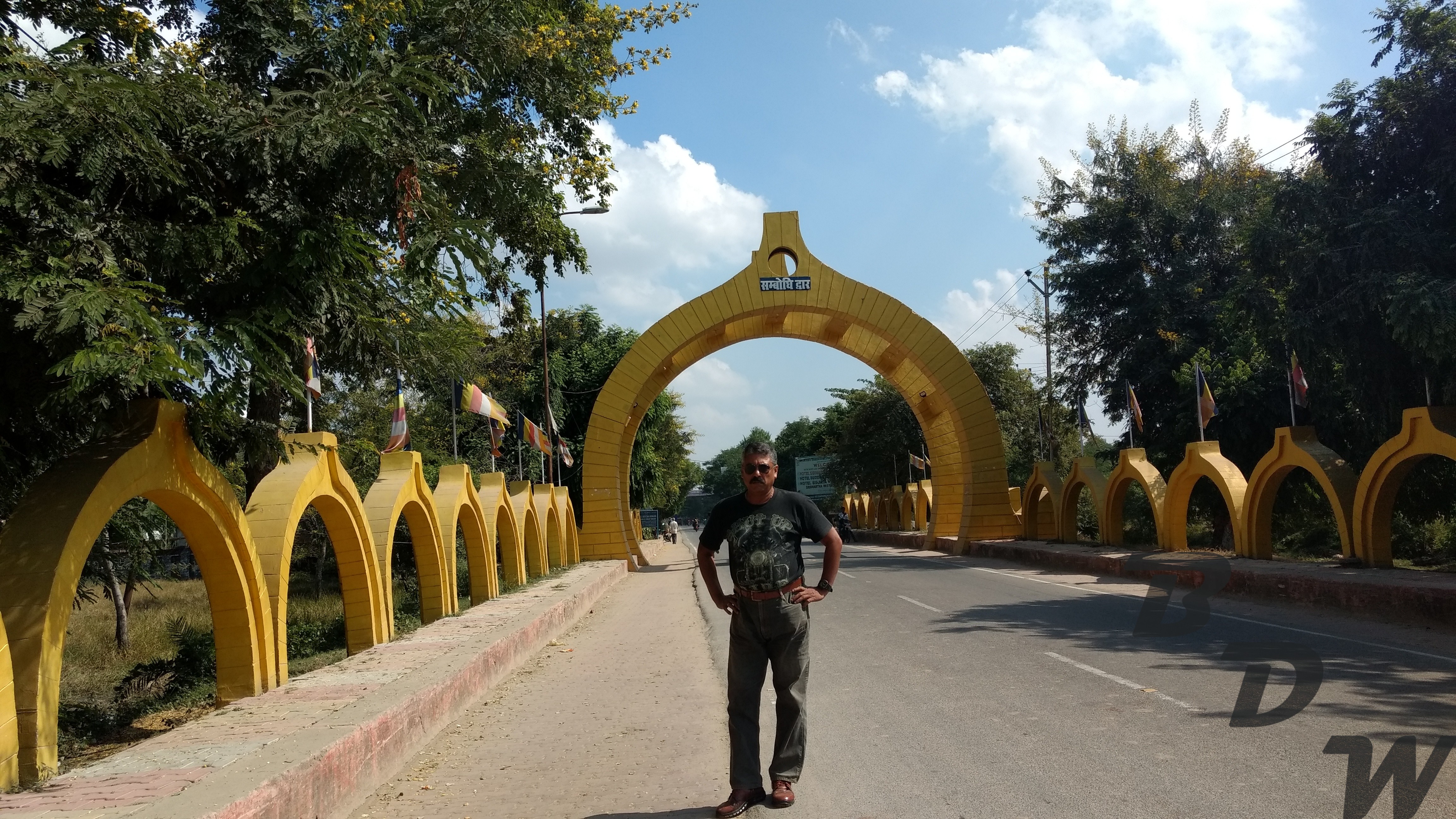
At the Mahabodi Temple
The magnificent Unesco World Heritage–listed Mahabodhi Temple, marking the hallowed ground where Buddha attained enlightenment and formulated his philosophy of life, forms the spiritual heart of Bodhgaya. Built in the 6th century AD atop the site of a temple erected by Emperor Ashoka almost 800 years earlier, it was razed by foreign invaders in the 11th century, and subsequently underwent several major restorations. Topped by a 50m pyramidal spire, the inner sanctum of the ornate structure houses a 10th-century, 2m-high gilded image of a seated Buddha. Amazingly, four of the original sculpted stone railings surrounding the temple, dating from the Sunga period (184–72 BC), have survived amid the replicas. Others are now housed inside the archaeological museum. Pilgrims and visitors from all walks of life and religions come to worship or just soak up the atmosphere of this sacred place. An enthralling way to start or finish the day is to stroll around the inside of the perimeter of the temple compound (in an auspicious clockwise pattern) and watch a sea of maroon and yellow dip and rise, while Tibetan monks perform endless prostrations on their prayer boards. Security has been fairly tight since bombs exploded in the complex in 2013.

At the Bodhi_Tree.
Undoubtedly, the most sacred fig tree ever to grace the Earth was the Bodhi Tree at Bodhgaya, under which Prince Siddhartha, the founder of Buddhism, achieved enlightenment. Buddha was said to have stared unblinkingly at the tree in an awed gesture of gratitude and wonder after his enlightenment. Today, pilgrims and tourists alike flock here to pray and meditate at the most important of Buddhism’s four holiest sites. Known as Sri Maha Bodhi, the original tree was paid special attention by Ashoka, a mighty Indian emperor who ruled most of the subcontinent from 269 to 232 BC, a century or two after Buddha’s believed death. His wife, Tissarakkhā, wasn’t such a fan of the tree and in a fit of jealousy and rage, caused the original Bodhi Tree’s death by poisonous thorns shortly after becoming queen. Thankfully, before its death, one of the tree’s saplings was carried off to Anuradhapura in Sri Lanka by Sanghamitta (Ashoka’s daughter), where it continues to flourish. A cutting was later carried back to Bodhgaya and planted where the original once stood. The red sandstone slab between the tree and the adjacent Mahabodhi Temple was placed by Ashoka to mark the spot of Buddha’s enlightenment – it’s referred to as the Vajrasan (Diamond Throne).
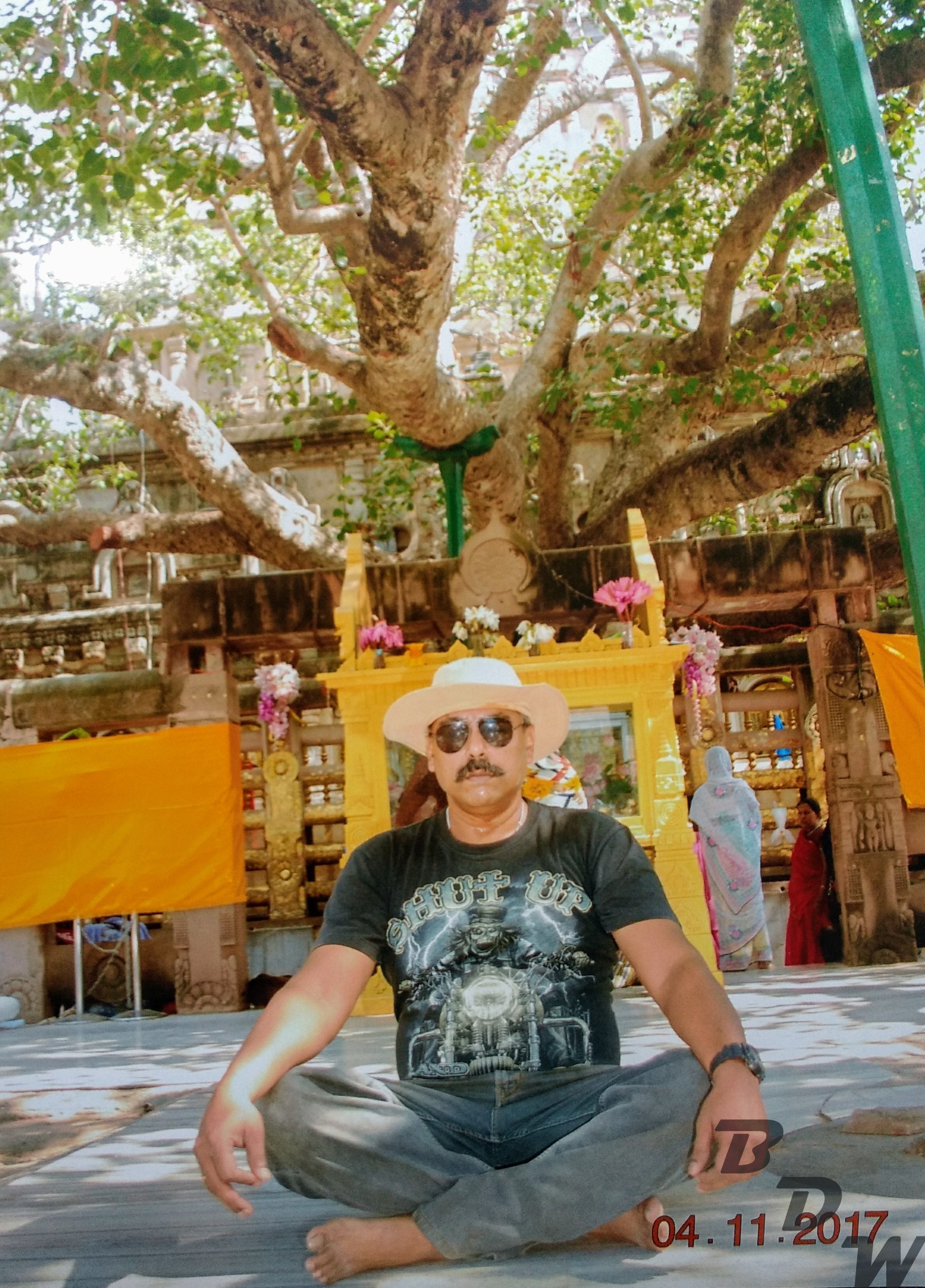
At the Sujata_Stupa
The huge Sujata Kuti stupa, across the Fagu River from Bodhgaya, was built to commemorate the residence of Sujata, the cow-herder who fed the starving Buddha rice pudding, thus ending his seven years of asceticism and spurring him to follow the Middle Way. The ancient brick stupa was originally covered with lime plaster and painted white. It’s a 20-minute walk from Bodhgaya. A further 10-minute walk away is Sujata Mandir, the actual site of the banyan tree where Sujata fed the Buddha.
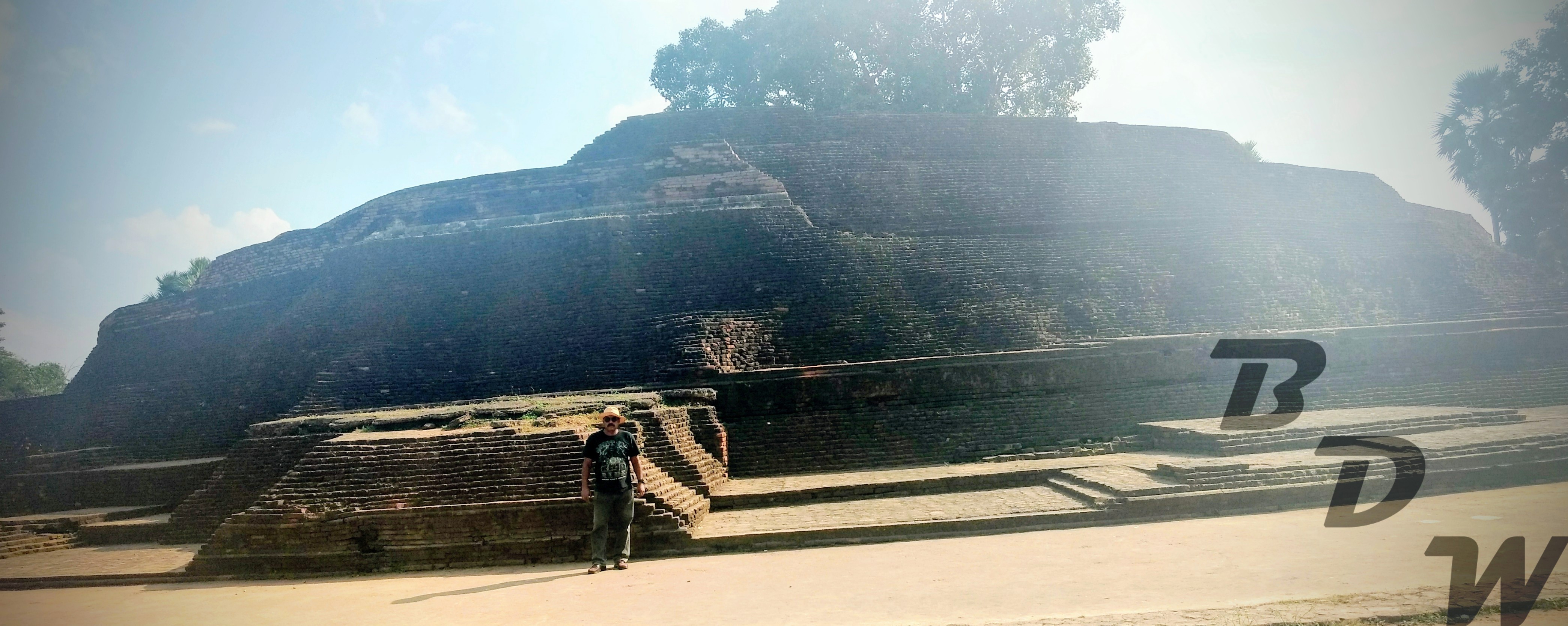
At the Bodhgaya_Archeological_Museum
This museum contains a number of (mostly headless) stone Buddhist sculptures dating from the 8th to 12th centuries, but the highlight is the collection of 2000-year-old granite and sandstone railings and pillars rescued from the Mahabodhi Temple, and also the statue of Maitreya the future Buddha. No photography is allowed here strictly, and I had to get #special_permission to click two photos, one each of the Railings and Maitreya.
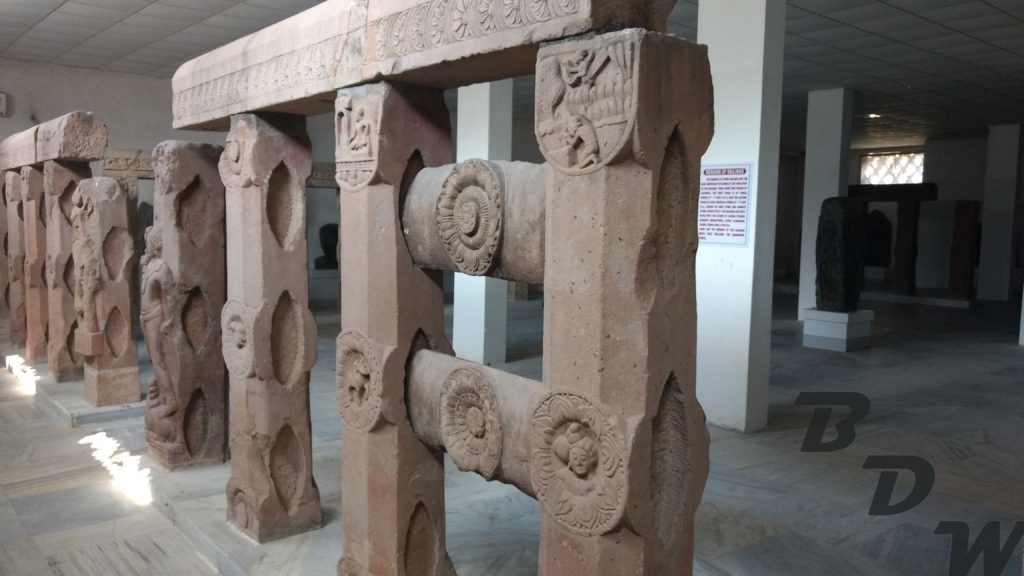
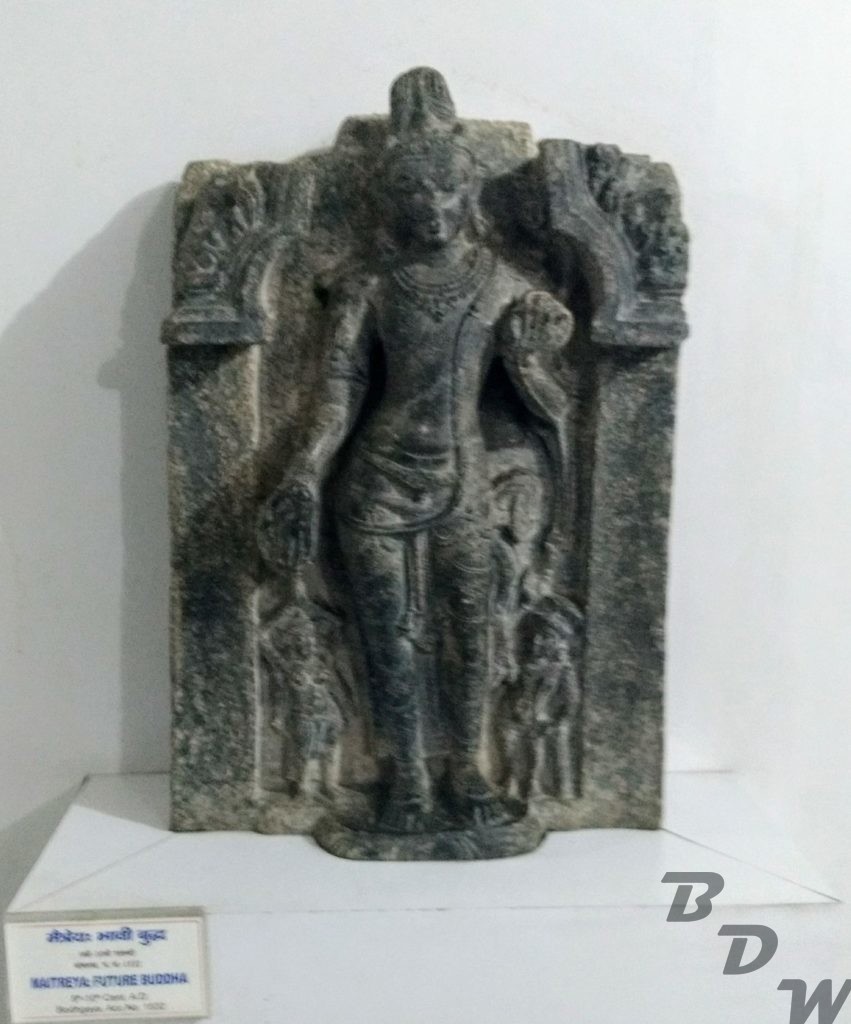
At the Great_Buddha_Statue.
This 25m-high Japanese-style statue towers above a pleasant garden at the end of Temple St. The impressive monument was unveiled by the Dalai Lama in 1989 and is surrounded by 10 smaller sculptures of Buddha’s disciples. The statue is partially hollow and is said to contain some 20,000 bronze Buddhas.
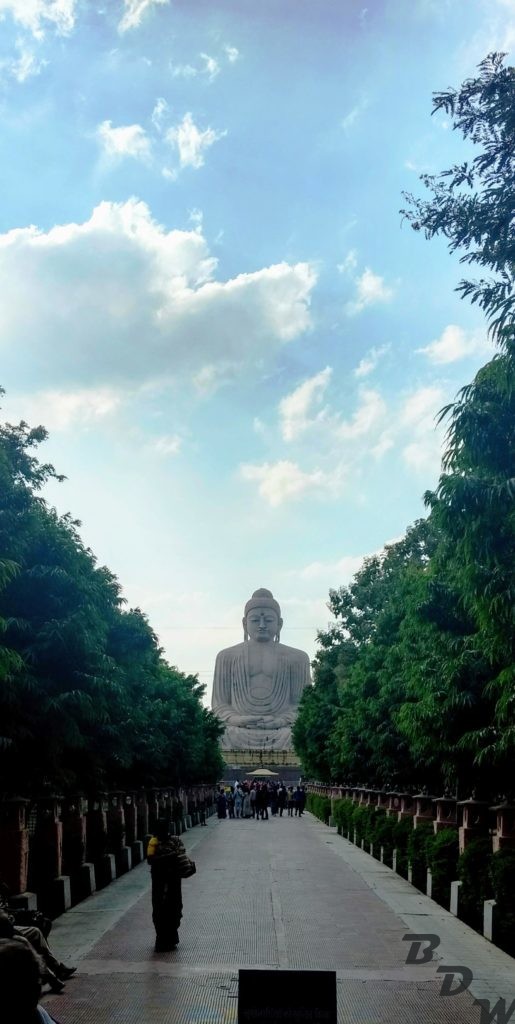
At the Tergar_Monastery
The most impressive of Bodhgaya’s Tibetan-style monasteries is the Tergar Monastery of the Karmapa school of Tibetan Buddhism. The Karmapa is often in residence here and gives teachings in the compound next door. There’s a small cafe on-site.
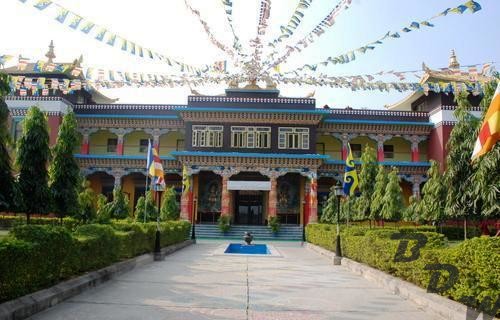
At the Thai_Temple
The impressive Thai Temple has a brightly coloured wat with gold leaf shimmering from its arched rooftop and manicured gardens. Meditation sessions are held here mornings and evenings.

At the Bhutanese_Monastery
The richly decorated Bhutanese Monastery is unique in having images of the kings of Bhutan and the bearded Zhabdrung, Bhutan’s religious leader, as well as some unusual 3D frescoes.
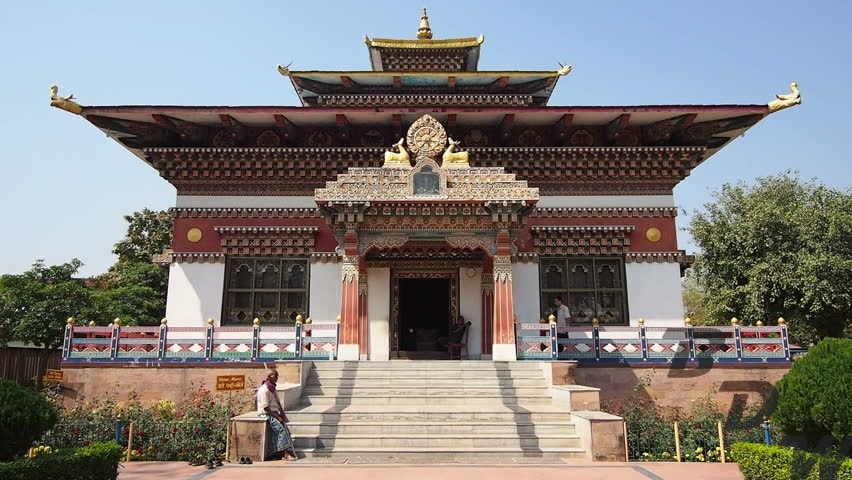
At the Shechen_Monastery
This Nyingma-school Tibetan monastery is notable for its large stupa dedicated to Tibetan lama Dilgo Khyentse Rinpoche and containing bone fragments of the Buddha.
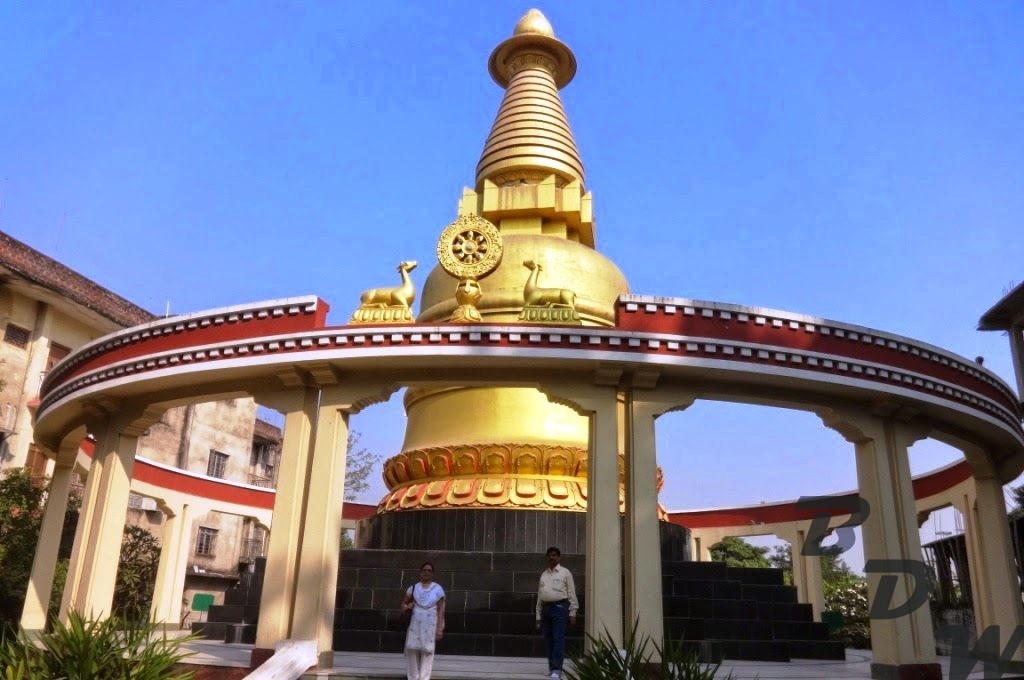
At the #Indosan_Nipponji_Temple
This lovely temple is an exercise in quiet Japanese understatement and has meditation at 5pm.
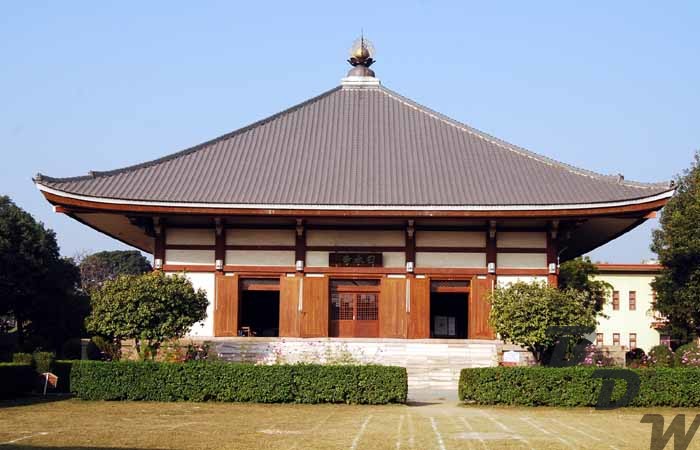
At the Tibetan_Karma_Temple
The Tibetan Karma Temple with the double-dragon brass door knockers has a large prayer wheel behind the main assembly hall.
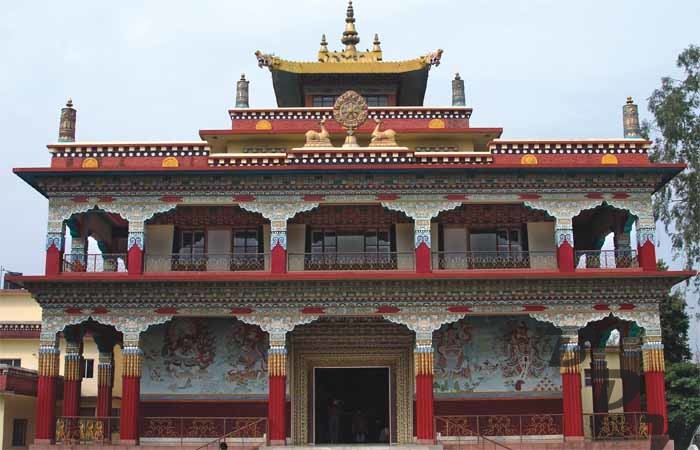
At the Namgyal_Monastery
The Namgyal Monastery has a large prayer wheel and an upper-floor chapel. Open sunrise to sunset.
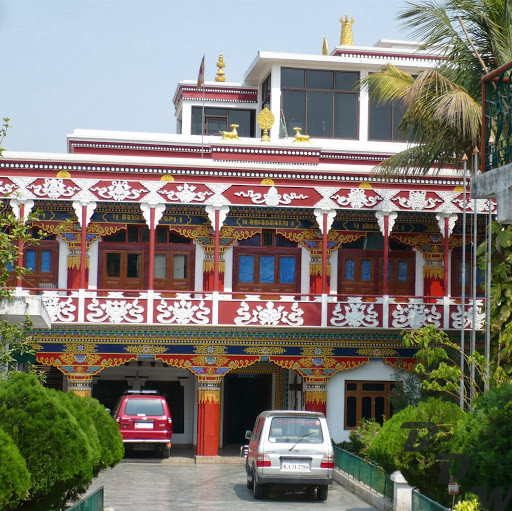
At the Chinese_Monastery
This minor temple is decorated in Chinese style and has prayers in the afternoon.
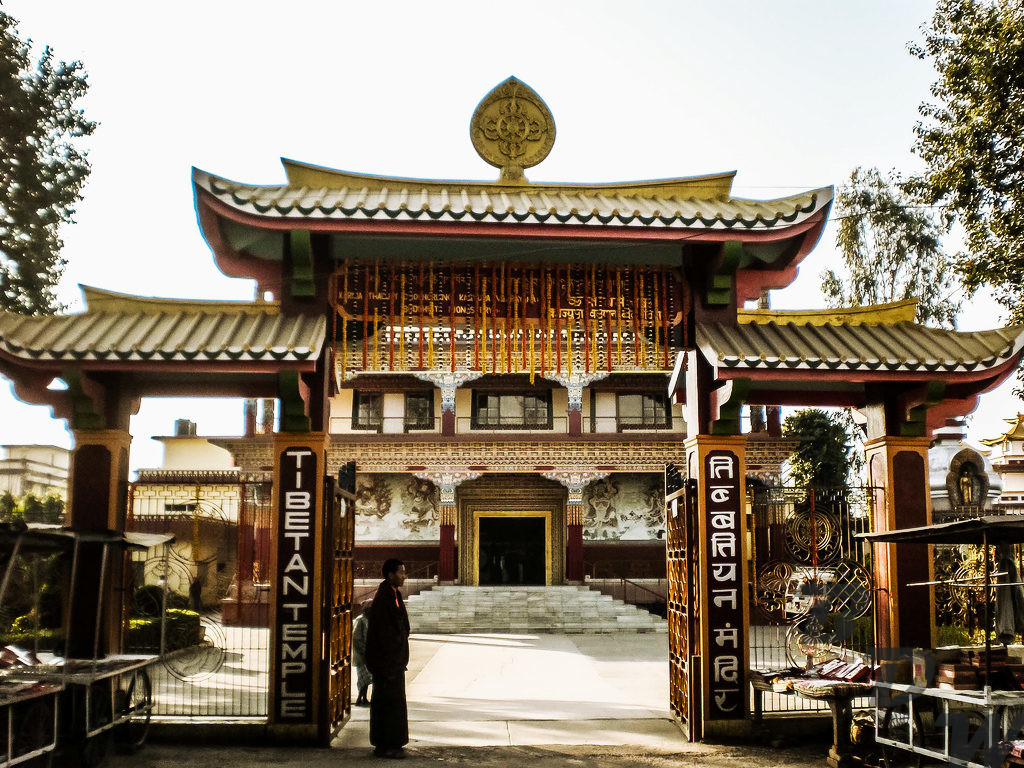
At the Vietnamese_Monastery
The calming Vietnamese Monastery has lush gardens and an eight-storey pagoda.
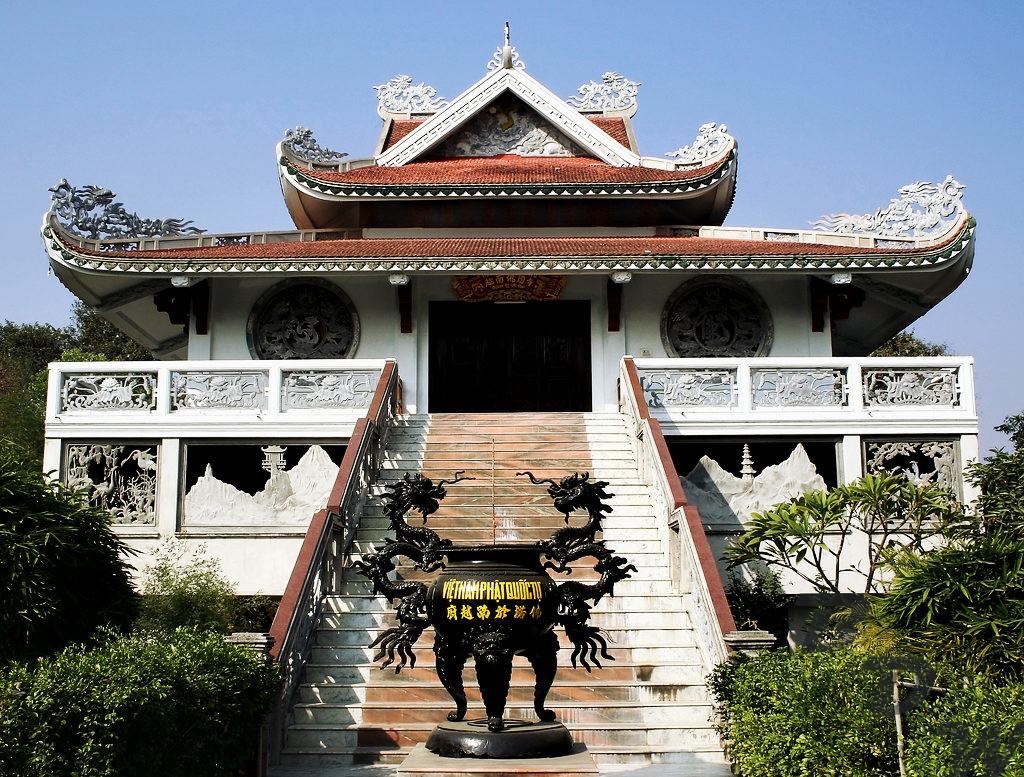
At Gaya Phalgu /Falgu river.
Gaya’s history goes way back to the times of the Mahabharata and Ramayana when it is believed that Lord Ram and Lakshman descended upon Gaya to offer the Pind Daan ritual. Gaya has a rich history of several dynasties ruling the region – stretching from 6th century BC to the 18th century AD. Ancient Bihar, and in particular Gaya, boasts a history of knowledge, learning, art and culture. The Sisunaga dynasty ruled the region in 600 BC, coincided with Buddha’s enlightenment, and it’s ruler Bimbisara became a disciple of Buddha. The Gupta Empire ruled the Gaya region in the 4th and 5th century AD and Gaya was the capital of the Bihar region. The Nanda dynasty controlled Gaya for a brief period sometime between 343 and 321 BC and was then followed by the Maurya Empire headed by Ashoka; the chief proponent of Buddhism during those times. During the Hindu revivalism age, the Guptas ruled for two centuries between 4th and 5th century AD, and then Gaya was passed to the Pala Empire, whose leader Gopala built the Bodh Gaya temple. The Khilji dynasty briefly held power in Gaya, Sher Shah Suri then held the reins and brought the entire Bihar region back to its glory days. The Mughals ruled the region for years before the British took over control till independence.

The Phalgu or Falgu, a river that flows past Gaya, is a sacred river for Hindus and Buddhists. In ancient scriptures, it is called the Nairañjanāin Sanskrit. The Phalgu is formed by the confluence, some 3 kilometres (2 mi) below Bodh Gaya, of the Lilajan (also called Niranjan or Nilanjan) and the Mohana, two large hill streams each of which is over 270 metres (300 yd) wide. The portion of the course of the Phalgu flowing by Gaya is sacred to the Hindus. It is the first holy site visited by the pilgrim and here his first offering must be made for the souls of his ancestors. According to the Gaya Mahatmya, which forms part of the Vayu Purana, the Phalgu is the embodiment of Vishnu himself. One tradition states that it formerly flowed with milk. According to Hindu belief, the soul wanders after death until pindadan, or religious service seeking salvation for the dead from the cycle of rebirth, is performed. The fortnight-long pitrapaksh period is considered auspicious to offer pindadan. The 15 days of the waning moon during the Hindu month of Ashvin are known as pitrapaksh. Pindadan is traditionally offered on the banks of the Phalgu at Gaya. It is mandatory for Hindu devotees offering pindadan to shave their heads and take a holy dip and head for the Baitarni pond. The prayers are performed at the Vishnupad Mandir. Priests, known as Gaywal-pandas, conduct the ritual. Thousands of Hindus visit Gaya for the purpose of pindadan.
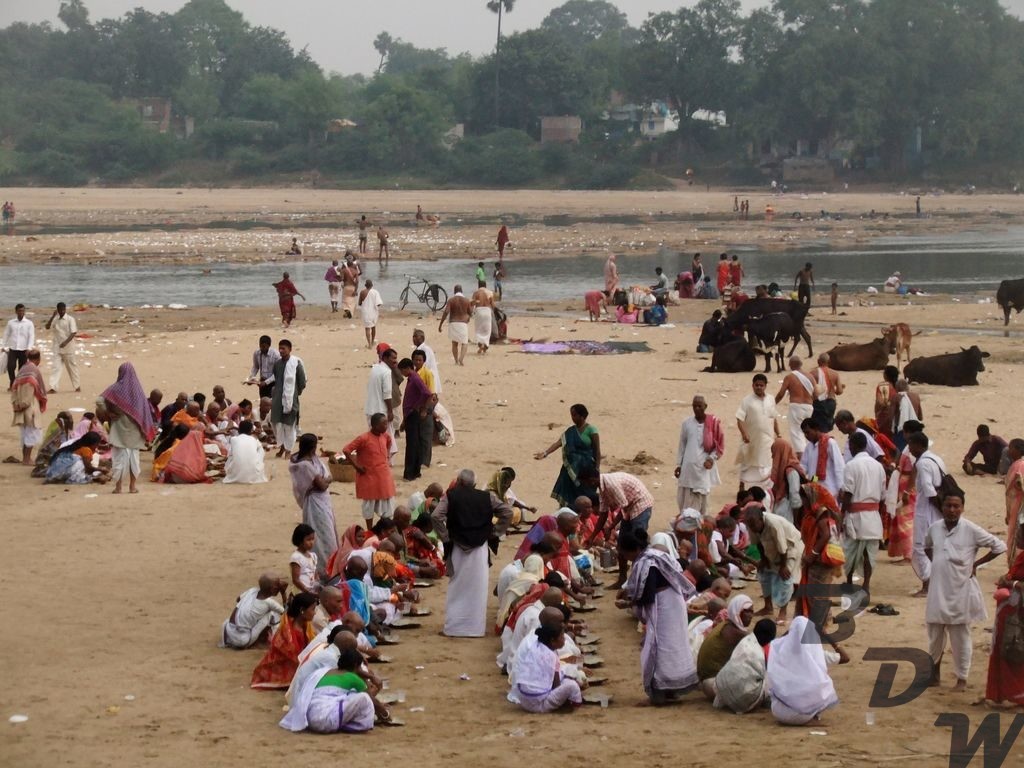
At Vishnupad_Mandir, Gaya
This temple is located along the Falgu River, marked by a footprint of Lord Vishnu known as Dharmasila, incised into a block of basalt. The Bhumihar Brahmins have been the traditional priests at Vishnupad Mandir in Gaya as Gayawal Pandas , nowadays other Brahmin took the management. Several legendary saints as Ramanujacharya, Madhvacharya, Sankaradeva and Chaitanya Mahaprabhu have visited this shrine.
Once a demon known as Gayasura, did a heavy penance and sought a boon that whoever see him should attain salvation (Moksham). Since salvation is achieved through being righteous in one’s lifetime, people started obtaining it easily. To prevent immoral people from attaining salvation Lord Vishnu asked Gayasura to go beneath the earth and did so by placing his right foot on asura’s head. After pushing Gayasura below the surface of earth, Lord Vishnu’s foot print remained on the surface that we see even today. The footprint consists of nine different symbols including Shankam, Chakram and Gadham. These are believed to be weapons of the lord. Gayasura now pushed into earth pleaded for food. Lord Vishnu gave him a boon that every day, someone will offer him food. Whoever does so, their souls will reach heaven. The day Gayasura doesn’t get food, it is believed that he will come out. Every day, one or the other from different parts of India will pray for welfare of his departed and offer food, feeding Gayasura.
The construction date of temple is unknown and it is believed that Rama along with Sita had visited this place. The present day structure was rebuilt by Devi Ahilya Bai Holkar, the ruler of Indore, in 1787, on the banks of the Falgu river. A flight of 1000 stone steps leads to the top of the Brahmajuni hill, 1 km southwest of the Vishnupad mandir. Visitors prefer to go to the top of Brahmajuni hill see the view of temple from top. There are many small temples near this temple.
Inside the Vishnupad Mandir, the 40 cm long footprint of Lord Vishnu is imprinted in solid rock and surrounded by a silver plated basin. The height of this temple is 30 meters and it a has 8 rows of beautifully carved pillars which support the pavilion. The temple is built of large gray granite blocks jointed with iron clamps. The octagonal shrine faces east. Its pyramidal tower rises up a 100 feet. The tower has sloping sides with alternately indented and plain sections. The sections are set at an angle to create a series of peaks joined at the top. Within the temple stands the immortal banyan tree Akshayabat where the final rituals for the dead takes place. On top of the temple is a gold flag weighing approximately 51 kg. Inside the temple is a (Garv ghiri ) a silver coated hexagon railing also known as (pahal).
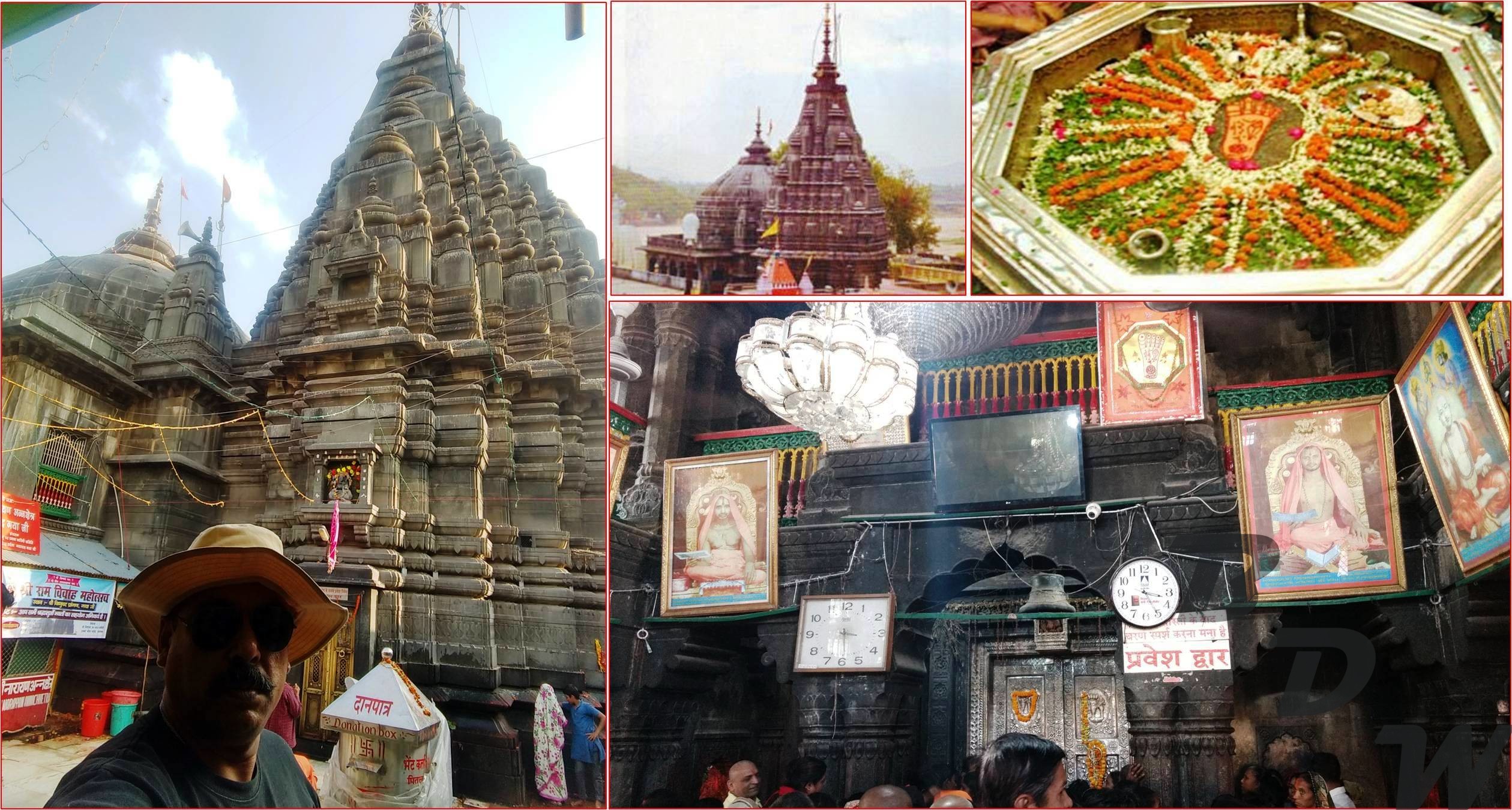
At Akshaya_Vatam (The Holiest Banyan Tree)
The story goes that Rama, along with his brothers and Sita, came to Gaya to perform the sacred rites for his father, Dasaratha. When the brothers were bathing in the river, Sita was sitting on the banks, playing with the sand. Suddenly, Dasaratha appeared out of the sand, and asked for the Pindam, saying he was hungry. Sita asked him to wait till his sons returned, so that she could give him the traditional Pindam of rice and til. He refused to wait, asking her to give him pindams made of the sand in her hand.
Having no other option, she gave him the Pindam he desired with five witnesses – the Akshaya Vatam, the Falguni River, a cow, a Tulsi plant and a Brahmin. Soon, Rama returned and started the rituals. In those days apparently, the ancestors would arrive in person to collect their share, and when Dasaratha did not appear, they wondered why. Sita then told them what had happened, but Rama could not believe that his father would accept pindams made of sand. Sita now mentioned her witnesses, and asked them to tell Rama the truth.
Among the five, only the Akshaya Vatam took her side and told the truth, while the others lied, trying to take Rama’s side. In her anger, Sita cursed all of them thus: the Falguni river henceforth would have no water at Gaya; the Cow would no longer be worshipped from the front as all others are- only its backside would be worshipped; there would be no more Tulsi plants at Gaya and the Gaya Brahmins would never be satisfied, they would always be hungry and crave more and more. She then blessed the Akshaya Vatam saying that all who came to Gaya would perform the Pinda pradaanam at the Akshaya Vatam too.
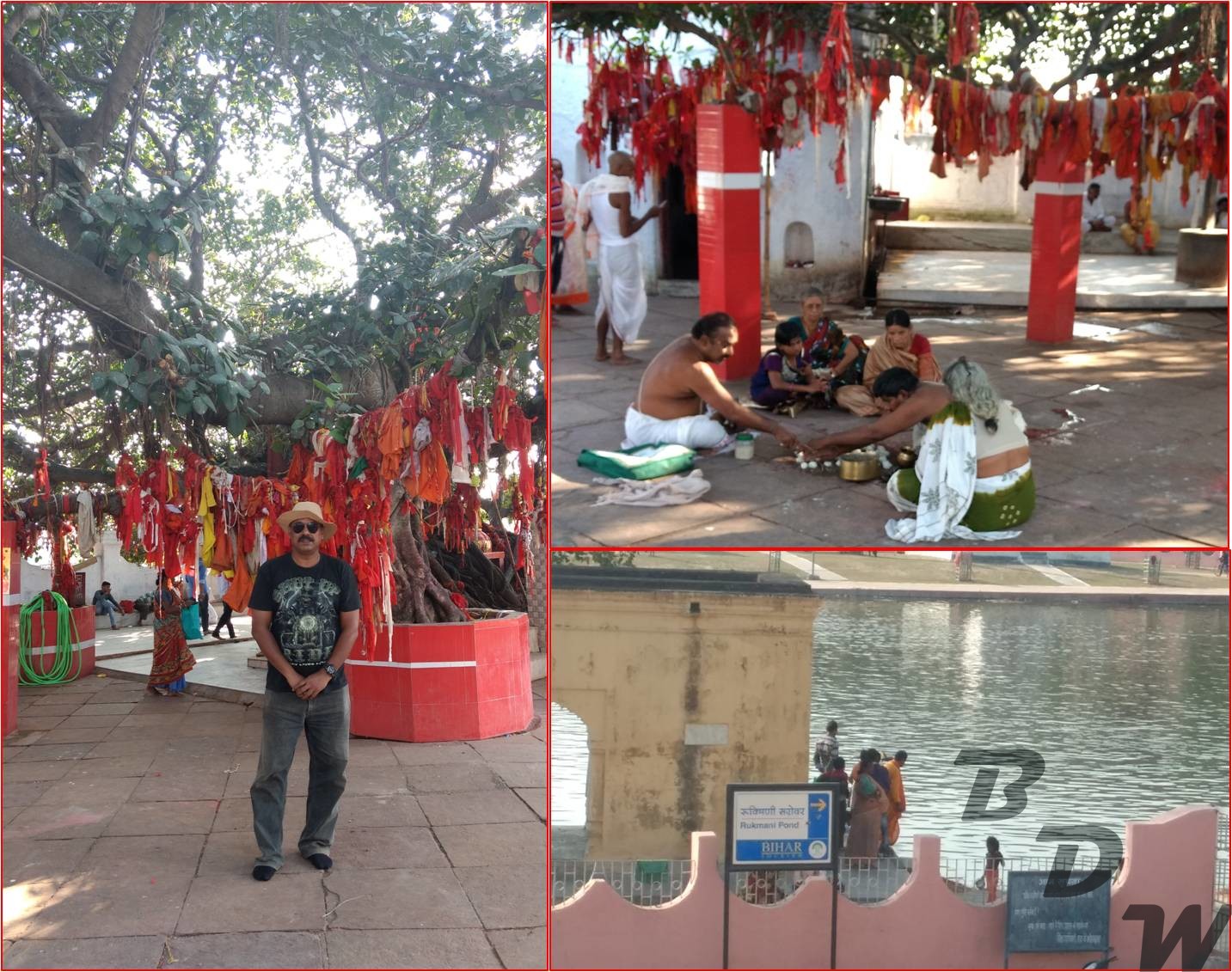
At Sainik_School_Nalanda
The nightstay was planned with a friend in the Sainik School, Nalanda with a close friend. How can Dada’s sojourn be complete without a Motorcycle. Rode the #Punjab_Bird, modified TB 350, owned by my friend … Whoa … What a bike … Harley feel.
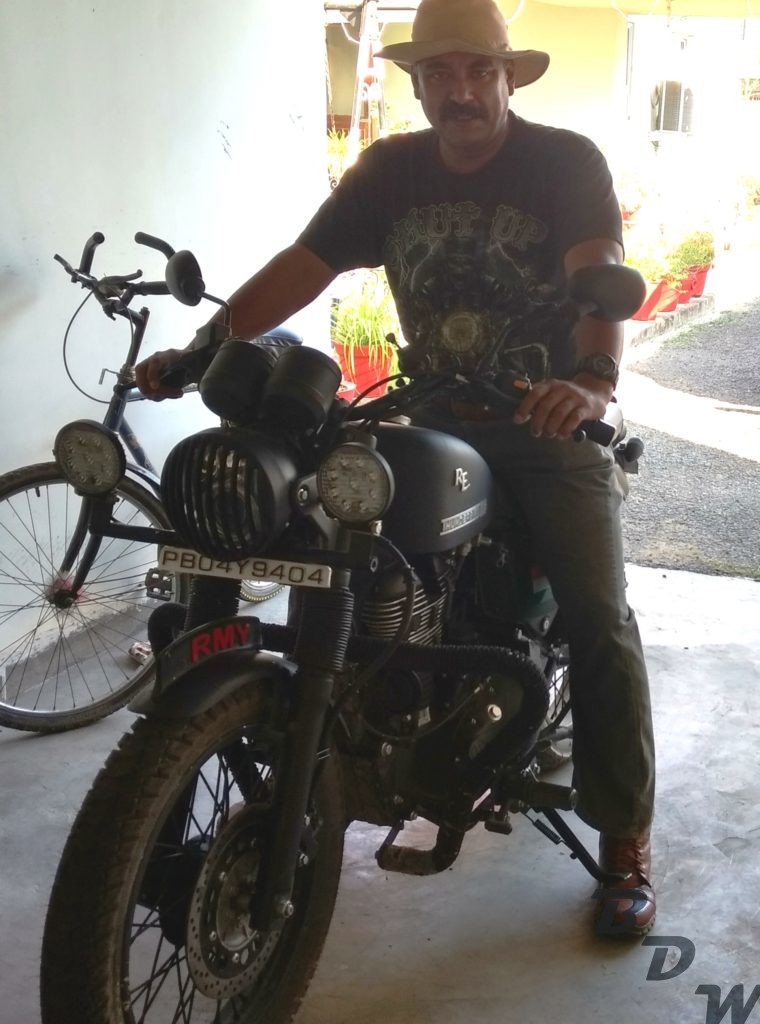
At the Pawapuri_Jalmandir.
Around 500 BC, Lord Mahavira, the last of the 24 Tirthankaras and one of the founders of Jainism, breathed his last here. This is the place where Lord Mahavira achieved Moksha or Nirvana (Salvation from the endless cycle of life and death). He was cremated at Pawapuri, also known as Apapuri (“the sinless town”). There was a great rush to collect his ashes, with the result that so much soil was removed from the place of his cremation that a pond was created.
Pawapuri Jain Mandir is a Shwetambar Jain Temple. The temple building itself is very quaint and has been constructed in the same style as Dilwara temples and Ranakpur Jain Temple, with white marble carvings. The Lily lake with numerous ducks is a true beauty. Hope my sins are washed away ….

At the Nalanda_Ruins
Nalanda, a large Buddhist monastery, now in ruins, was one of the most publicly acknowledged Mahaviharas of ancient India located in ancient Magadha kingdom (modern Bihar). It remained a learning centre from 7th century BCE through c. 1200 CE and is many a time categorised as one of the early universities of India along with other institutions like ‘Vikramashila’ and ‘Taxila’. The patronage of the Gupta Empire saw this Mahavihara prosper during 5th and 6th century as also during the reign of emperor Harsha of Kannauj. However tantric developments of Buddhism during the Pala rule saw an eventual decline of Nalanda. Students and scholars from places like China, Central Asia, Korea and Tibet studied in this great vihara that taught Mahayana, Hinayana, Sanskrit grammar, Vedas and Samkhya among others. Imminent pilgrim monks like Hiuen Tsang and I-tsing from East Asia visited this place in the 7th century. Recognised by UNESCO as a World Heritage Site, Nalanda not only boasts of being one of the most revered Buddhist tourism sites in India but also continues to draw attention from scholars, historians and archaeologists.
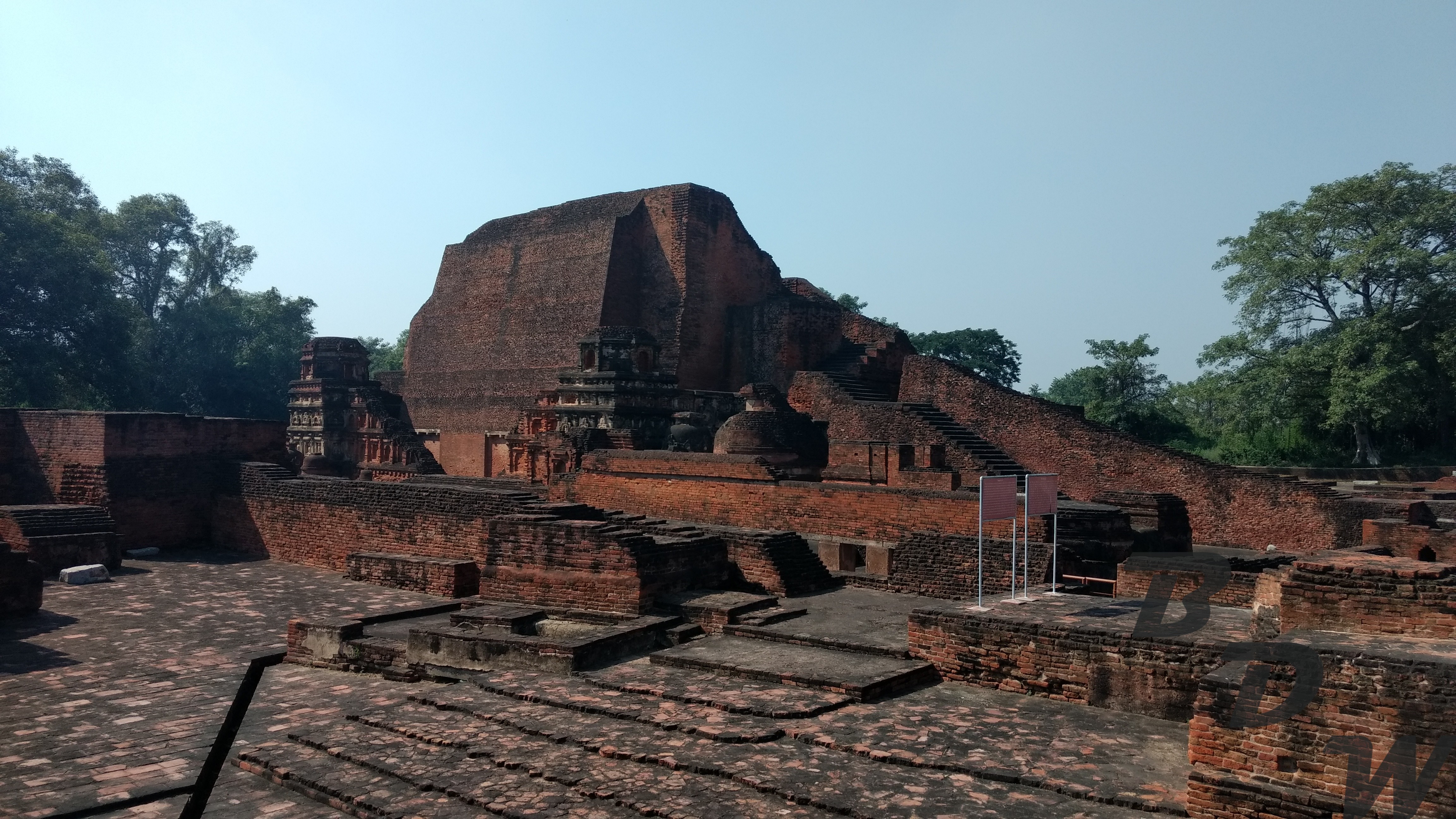
Nalanda was originally a thriving village close to Magadha’s capital Rajagriha (presently Rajgir) located beside a prime trade route. According to sources, Gautam Buddha gave away lectures in a close-by mango grove called Pavarika and Jain thirthankara, Mahavira also stayed at Nalanda for about fourteen rainy seasons thus validating the existence of the place to as early as the 5th–6th century BCE. The Tibetian Lama Taranatha of the 17th century mentioned that a huge temple was constructed at the site of chaitya of Shatiputra at Nalanda by the great Indian emperor of the Maurya Dynasty, Ashoka who later embraced Buddhism. Taranatha also stated that Nagarjuna, a 3rd-century CE luminary and Mahayana philosopher remained chief of the institution while his contemporary, another luminary Suvishnu constructed around 108 temples in the area. Various theories exist regarding the naming of the place. While Hiuen Tsang asserted that it was derived from ‘Na alam da’ meaning charity without intermission or no end in gifts, I-tsing believed it came from ‘Naga Nanda’ where naga refers to a snake in the local tanks whose name was Nanda. The travelogues of these two Chinese monks gave most of the information that could be gathered about Nalanda prior to the 8th century.
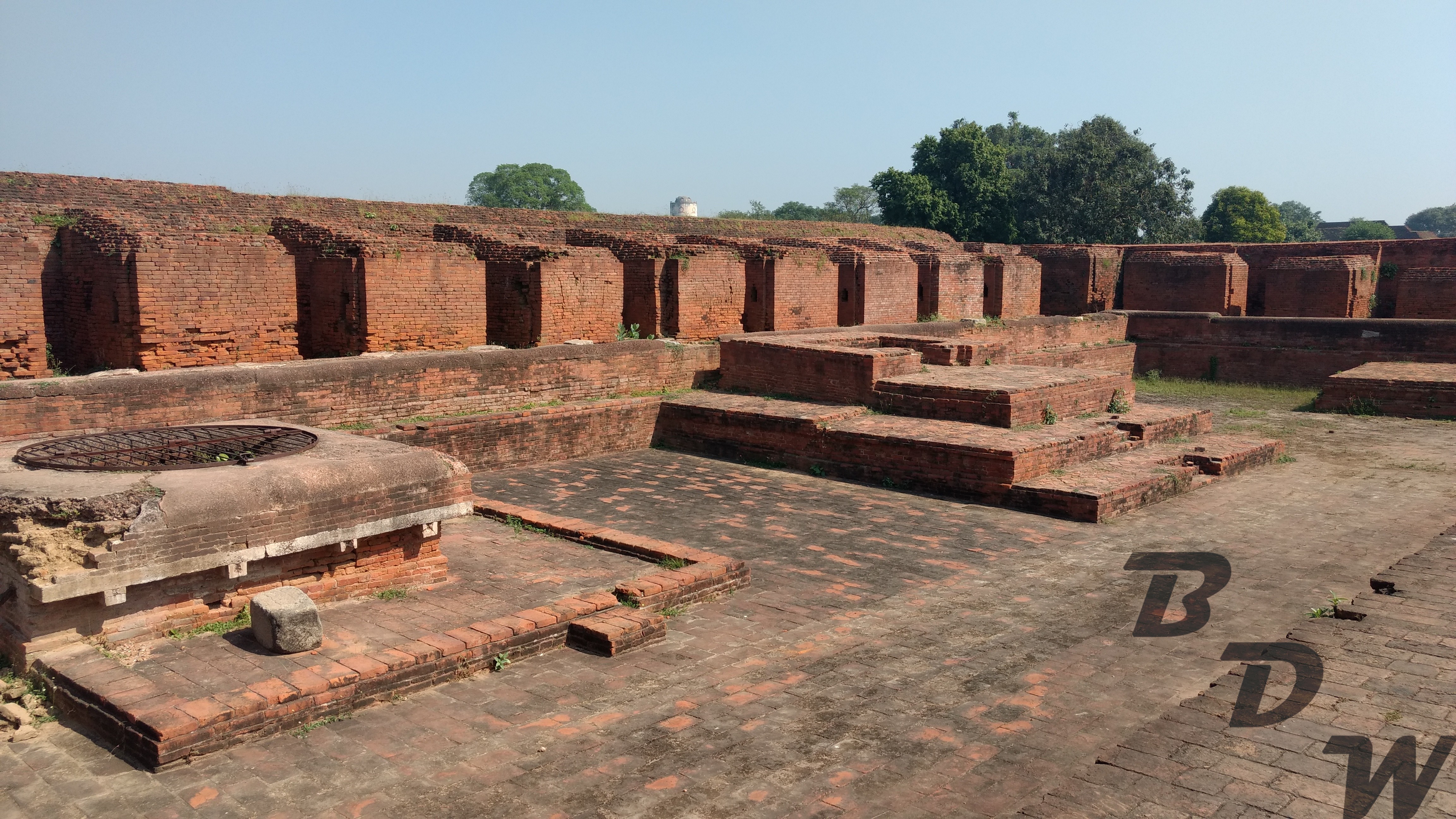
During Gupta Period. The accounted history of Nalanda dates back to the Gupta Empire with a seal confirming the founder of the place as the 5th-century CE Gupta monarch Shakraditya who was identified as emperor Kumaragupta I (r. c. 415 – c. 455 CE). A coin of the monarch was found at the site. Expansions and development including building new temples and monasteries took place during the reign of his successors namely Buddhagupta, Baladitya, Tathagatagupta and Vajra. Among them the 12th Gupta emperor Narasimhagupta Baladitya was raised under the guidance of Vasubandhu, a very influential Buddhist monk, scholar and Mahayanist philosopher from Gandhara. Clay sealing of Baladitya was found in Nalanda. A 91 m high vihara encompassing a Buddha statue and a sangharama was built by him.
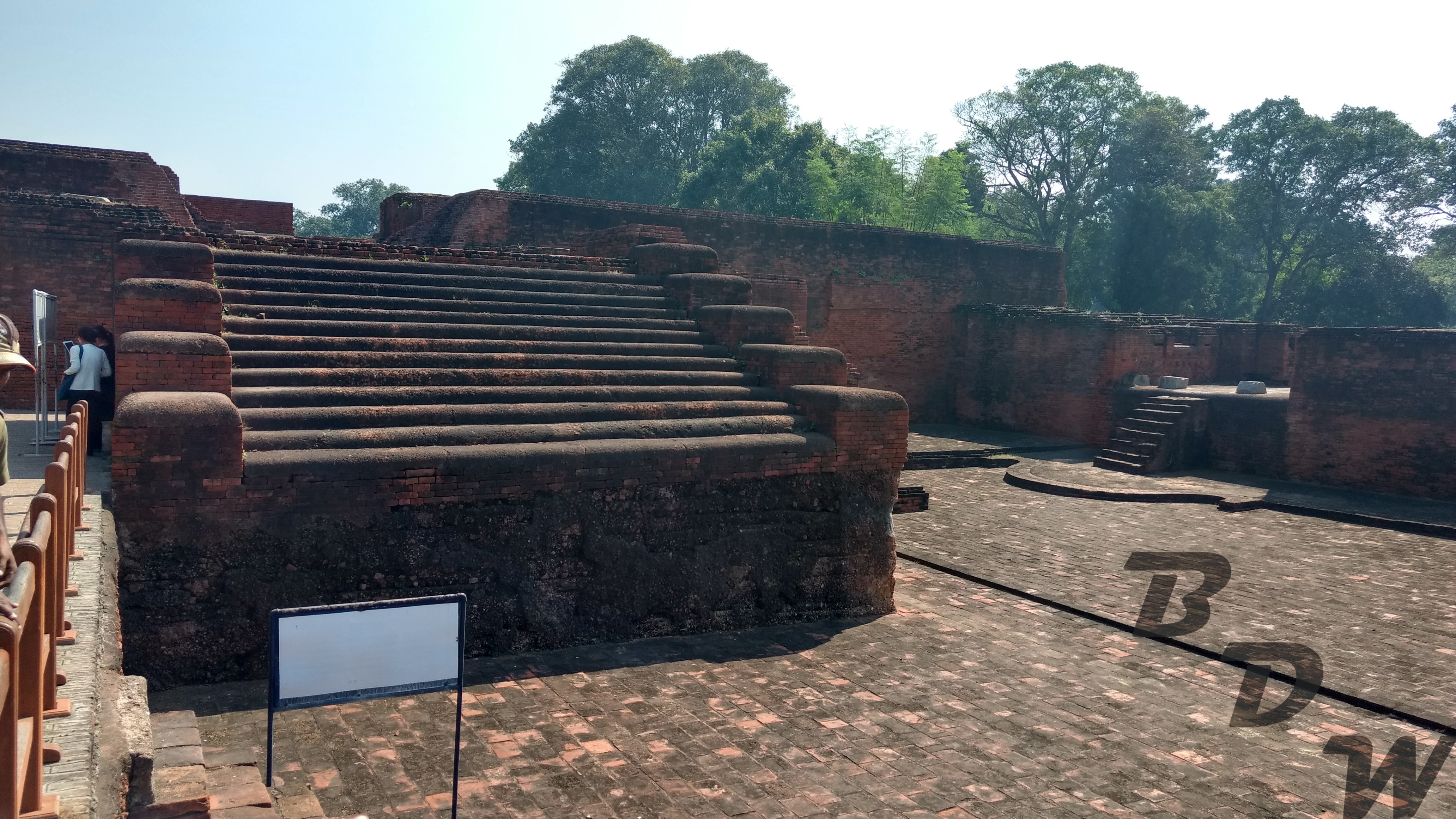
Post Gupta Period. Post the Gupta period Nalanda continued to develop under the auspices of several kings, particularly during the 7th century under the reign of emperor Harsha of Kannauj. While one of the monarchs constructed a high wall surrounding the structures of the site, another emperor Purnavarman built a six stage pavilion for installing a 24 m high copper idol of Lord Buddha. Emperor Harsha who held the Buddhist monks in high regards and deemed himself as their servant was a converted Buddhist whose royal congregation included around thousand monks from Nalanda. A brass monastery was constructed by him inside Nalanda. Revenues of hundred villages as also daily supply of rice, milk and butter were furnished to the monks of the institution under the instruction of the emperor.

During Pala Period. The Pala Empire that originated from the Bengal region remained an imperial power on the Indian subcontinent during the Late Classical period from 8th to 12th century. The Palas were followers of Mahayana and Tantric schools of Buddhism. Although they revered Nalanda as a prized cultural legacy and continued to patronize it, the increasing Tantra-influenced version of Mahayana practiced in Vajrayana had an effect on Nalanda with tantric doctrines and magic rites taking precedence. They set up four more Mahaviharas at Odantapura, Jagaddala, Vikramashila and Somapura all of which typified the Nalanda Mahavihara. Establishment of such Mahaviharas most likely saw several learned monks joining them thus leaving Nalanda. Among the Pala emperors the third and most powerful emperor, Devapala, who ruled in the 9th century and constructed the Mahavihara at Somapura seemed to be the most noted patron of his time. Two important inscriptions and several metallic figures having his reference were unearthed from the ruins of Nalanda. While one of the inscriptions etched on a copper plate manifests endowment bestowed by Balaputra, the maharaja of Srivijaya, the other inscription, the Ghosrawan inscription indicated that Devapala patronised Vedic scholar Viradeva who eventually served as head of the Mahavihara.
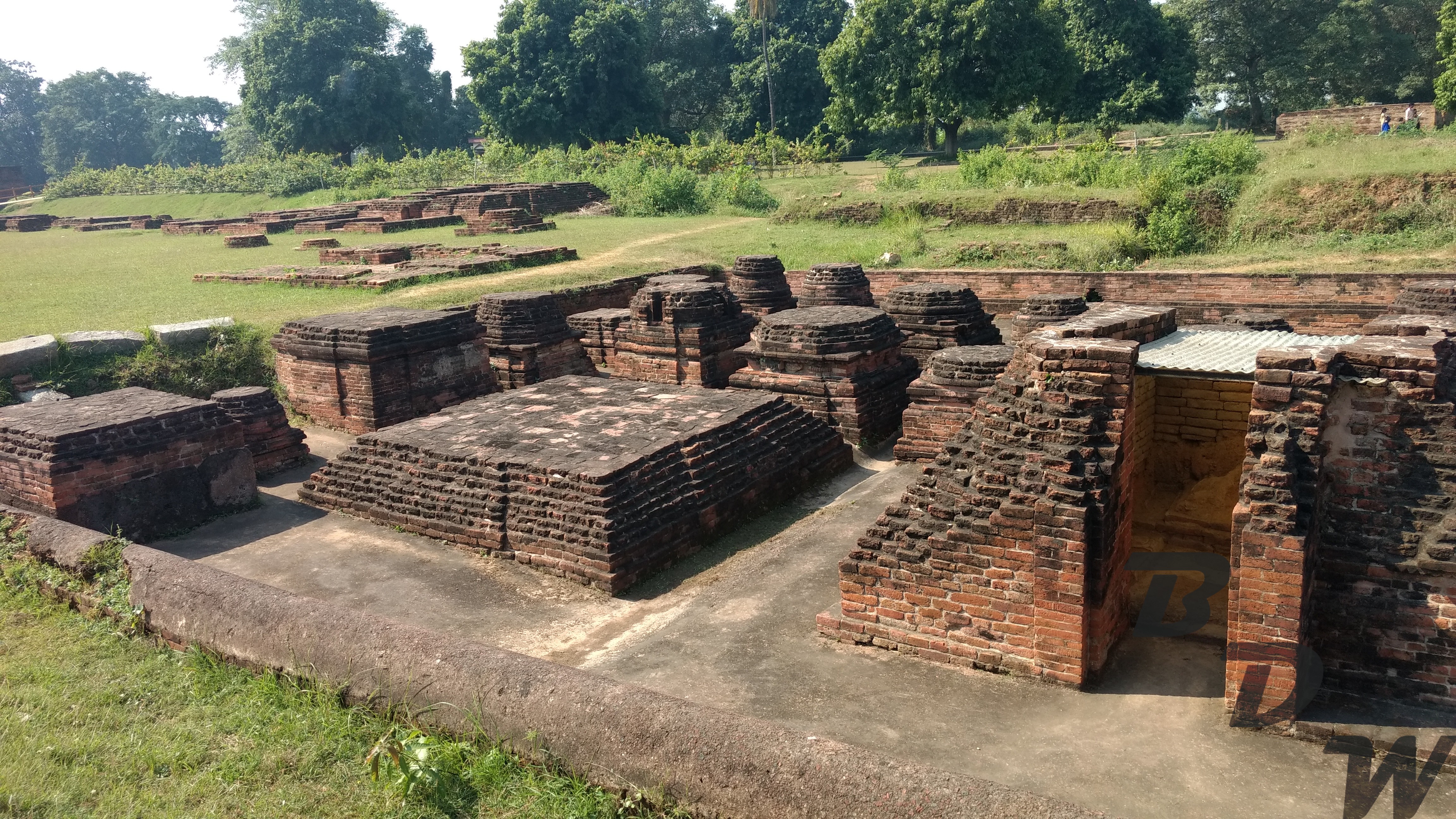
Hiuen Tsang in Nalanda. Hiuen Tsang also called Xuanzang was a Chinese Buddhist monk, scholar, translator and traveler who elucidated the communication between India and China during the early Tang dynasty of China. He visited the Nalanda Mahavihara twice in 637 and 642 CE while travelling around India from 630 to 643 CE.
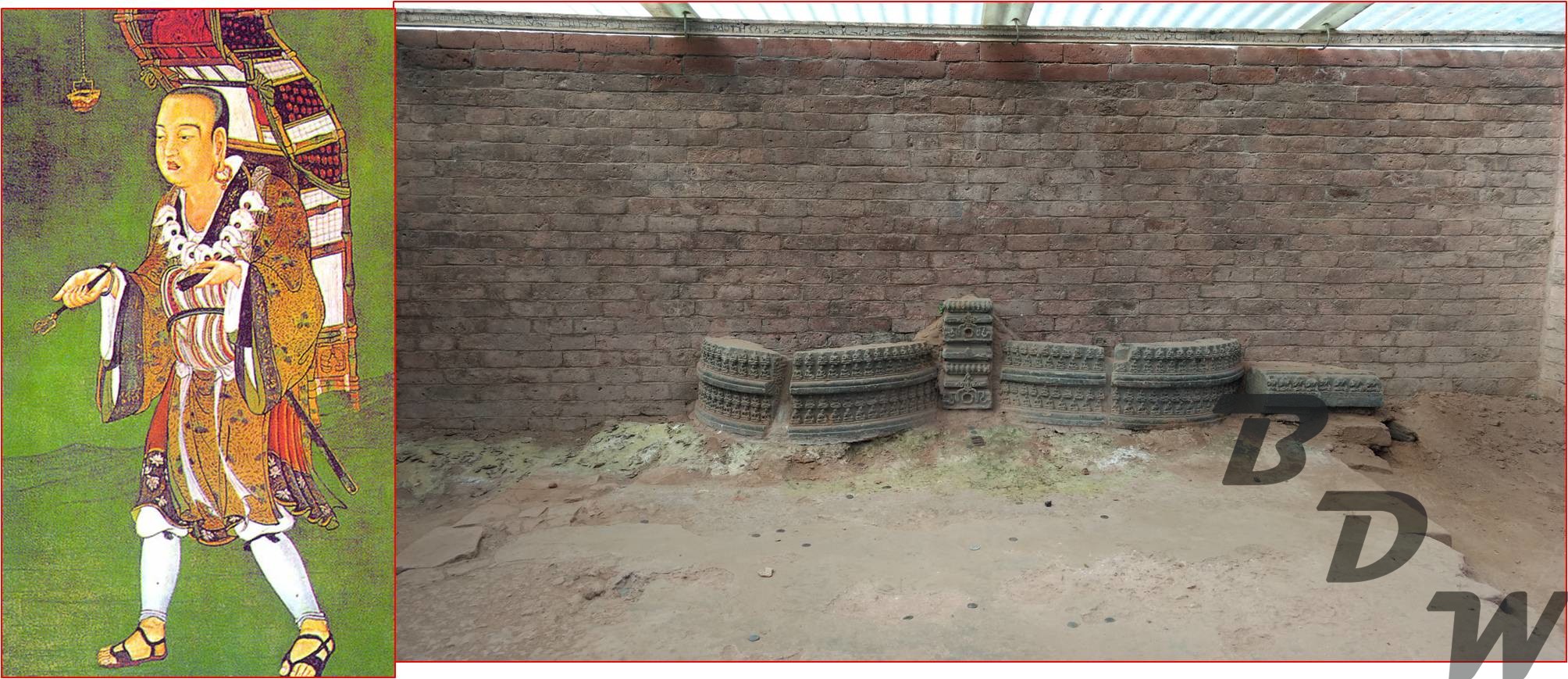
I-tsing in Nalanda. Another Chinese Buddhist monk of Tang dynasty, Yijing, also known as I-tsing visited India in 673 CE after studying Sanskrit in Srivijaya. In his 14 years tenure in India he spent 10 years in Nalanda and furthered his studies in Buddhism. He took 400 Sanskrit texts with him on his return to China in 695 CE and eventually translated them in Chinese language. Accounts given by him predominantly focus on the practice of the religion in India and a thorough elucidation of the traditions, rules, customs and norms followed by monks of Nalanda. He mentioned about the daily course of the monks of Nalanda that included an array of rites meant for all starting from the bathing hour to ablution of Lord Buddha’s image to performing chaityavandana in the evening that included chanting of shlokas and particular set of hymns. All the works were signalled by beating a gong. He mentioned that as huge daily assembly gatherings posed difficulty due to large number of inmates at the monastery, a ritual was later adopted which saw a priest along with amateur servants and children holding flowers and incense visiting the halls of the monastery while chanting the service.
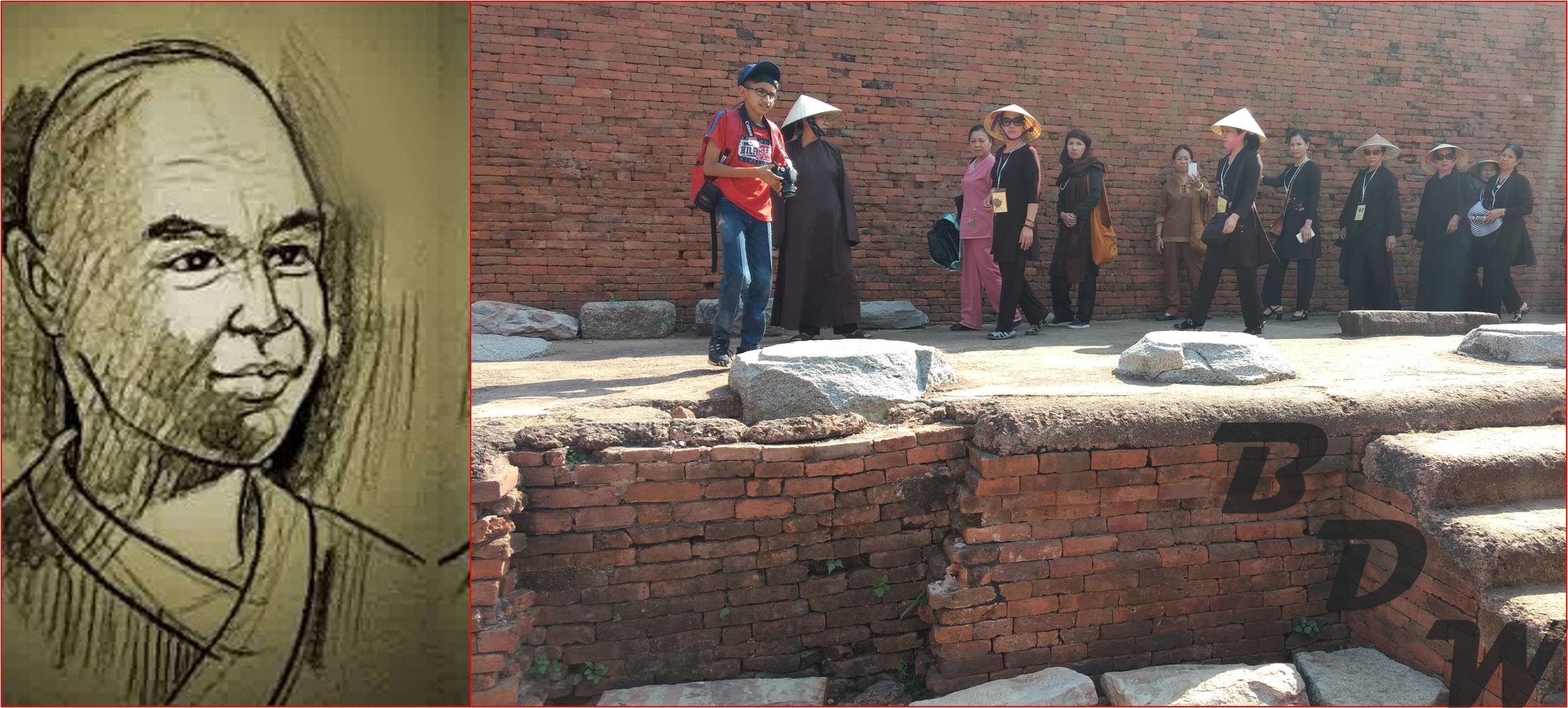
Nalanda, an architectural chef d’oeuvre that was spread over a large area during the ancient period, is today in dilapidated condition with its excavated ruins measuring an area of around 12 hectares. Comprising of 10 temples, 8 individual compounds, classrooms, meditation halls, parks and lakes this residential school with dormitories for students boasted of having more than 2,000 teachers and 10,000 students during its prime. Scholars and students from far off places including China, Japan, Turkey, Persia, Korea, Tibet and Indonesia attended the Mahavihara. Subjects taught here included Mahayana, Hinayana, Samkhya, Atharvaveda, Shabdavidya, Chikitsavidya and Vedas among others. According to conventional Tibetian sources, Nalanda housed a big library called ‘Dharmaganja’ (Piety Mart) that encompassed three multi-storied edifices called ‘Ratnaranjaka’ (Jewel-adorned), ‘Ratnodadhi’ (Sea of Jewels) and ‘Ratnasagaral (Ocean of Jewels). Collections of the library included religious manuscripts and texts on medicine, astronomy, logic, astrology and literature among others. According to I-tsing, the monks would assemble to discuss administrative and other decisive matters and finalised decisions only after taking consent of all at the assembly as also the resident monks.
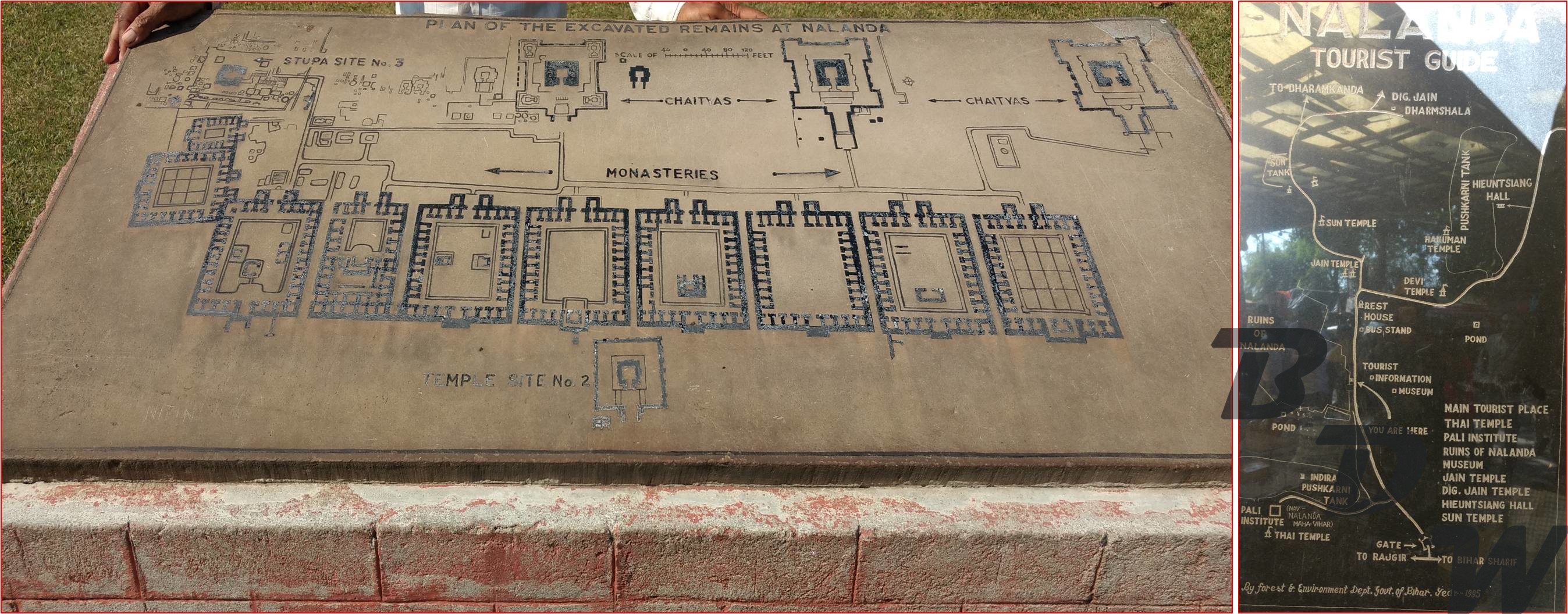
Decline and End. With the rise of Tantric practices in Buddhism during the Pala rule that included secret magic and rituals following the gradual decline of the Pala dynasty post 11th century complimented with a surge of Hindu philosophies across the subcontinent saw an eventual decline of Buddhism in India leading to decline of Nalanda. Although still surviving, Nalanda presumably faced a big blow in c. 1200 CE when it was plundered and destroyed by an army headed by Bakhtiyar Khilji, a Turkish military general of the Muslim Mamluk Dynasty. According to some sources, it tried to function temporarily but was gradually deserted and only came to notice when the ‘Archaeological Survey of India’ (ASI) surveyed the site and conducted initial excavation works in the 19th century. Excavation works of ASI in 1915 brought to light existence of 6 brick temples and 11 monasteries. Several antiques including inscriptions, coins, sculptures and seals were excavated from the site which now finds place in the Nalanda Archaeological Museum.
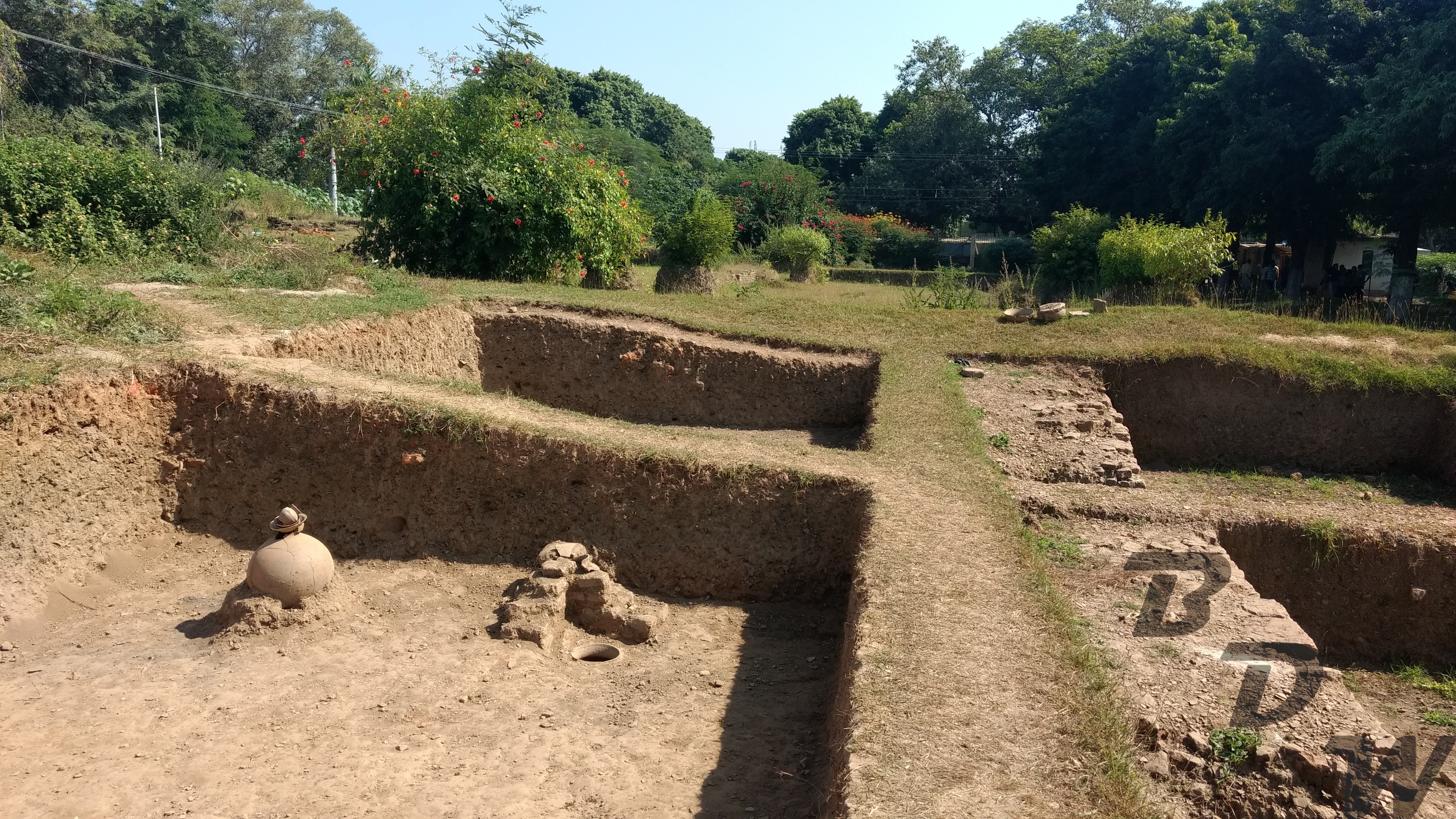
At the Nalanda_Archaeological_Museum
The museum was established in 1917 and houses the antiquities mainly those excavated from Nalanda, the earliest university cum monastery complex and from Rajgir. Out of 13463 antiquities, 349 are on display in the four galleries of the museum. The antiquities from Nalanda are datable from 5th to 12th century AD but some of those from Rajgir are a little earlier in date. The sculptures kept in this museum are made of stone, bronzes, stucco and terracotta but majority of those have been carved on Basalt stone. Most of the images belong to Buddhist faith but those belonging to Jaina or Hindu religion are also quite good in number. The key gallery displays sixteen sculptures among which Trailokya Vijay (a Vajrayana diety), Bodhisattva Avalokiteshvara, Maitreya, Buddha in Varad, Dharmachakra and Bhumisparsh posture, Samantbhadra, Parshvanath and Nagaraj are worth mentioning. A scale model of excavated remains of Nalanda University occupies the central place of the hall.
PHOTOGRAHY IS NOT PERMITTED, I had to take Special-permission to click two photos, Harshavardhana_seal and Burnt_rice_from_ruins.
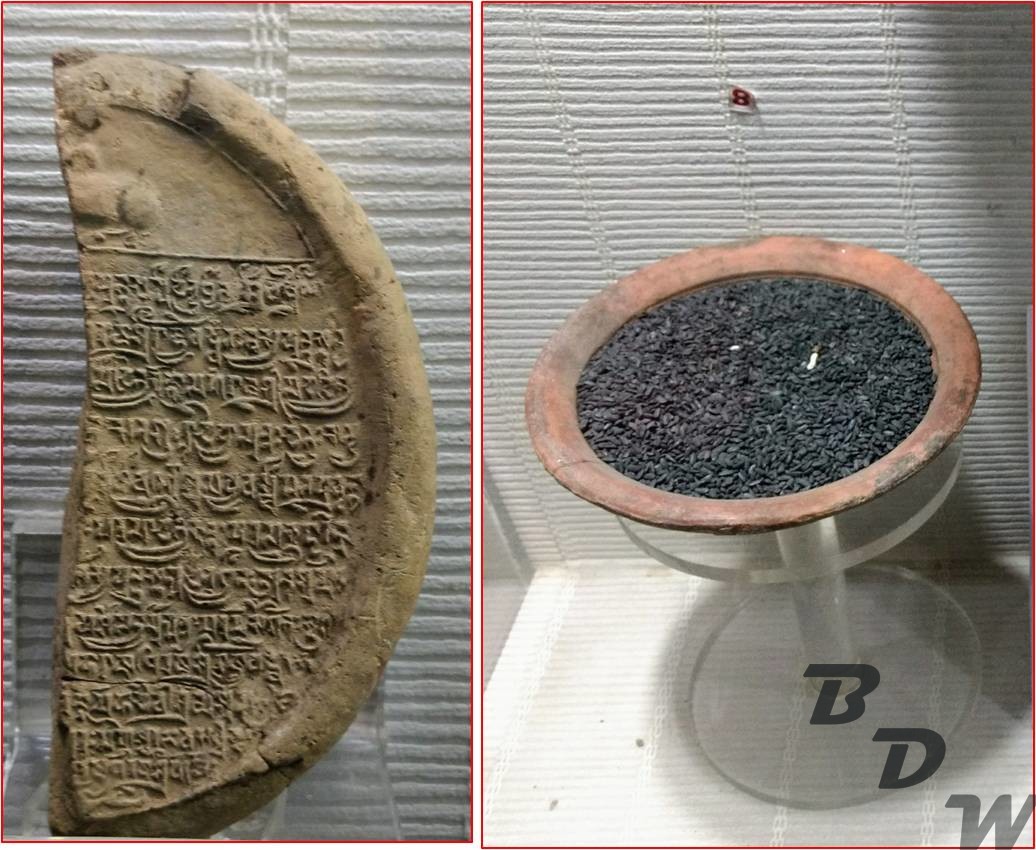
At the Xuanzang_Monastery (HUEN TSANG Monastery)
Hiuen Tsang also called Xuanzang was a Chinese Buddhist monk, scholar, translator and traveler who elucidated the communication between India and China during the early Tang dynasty of China. He visited the Nalanda Mahavihara twice in 637 and 642 CE while travelling around India from 630 to 643 CE. In Nalanda he came under the tutelage of Shilabhadra, a Buddhist monk, philosopher and expert on scripting who remained an abbot of the monastery. Xuanzang who was lovingly called Mokshadeva in Nalanda took up courses on Buddhist studies, Sanskrit, logic and grammar and at a later stage delivered lectures there. A guest of Emperor Harsha, he catalogued the generosity and bountifulness of the emperor. He carried 657 Buddhist texts, mostly Mahayanist as also 150 relics in 520 cases with him while on his return to China, being transported on 20 horses. 74 of such texts were translated by him. Around 11 travellers from China and Korea visited Nalanda over the next three decades after his return to China.
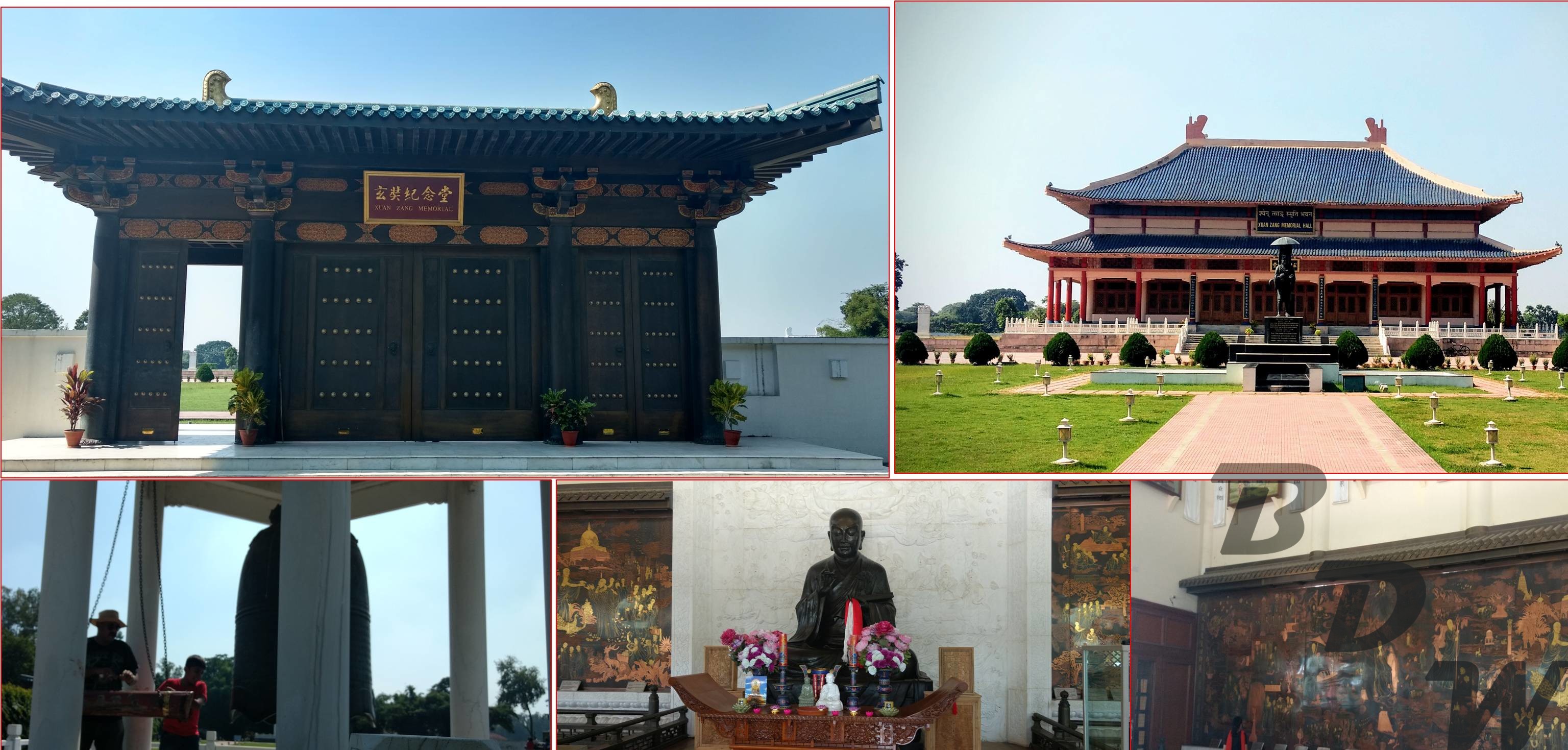

At the World_Peace_Stupa_Rajgir.(SHANTI STUPA)
Constructed in 1965, this blazing-white, 40m stupa stands atop Ratnagiri Hill about 5km south of town. Recesses in the stupa feature golden statues of Buddha in four stages of his life – birth, enlightenment, preaching and death. A fun, but wobbly, single-person chair-ropeway runs to the summit, which affords expansive views of hills and a few Jain shrines dotting the landscape. Next to the stupa, a Japanese-built peace pagoda reverberates to the rhythmic sound of meditative drum beats.
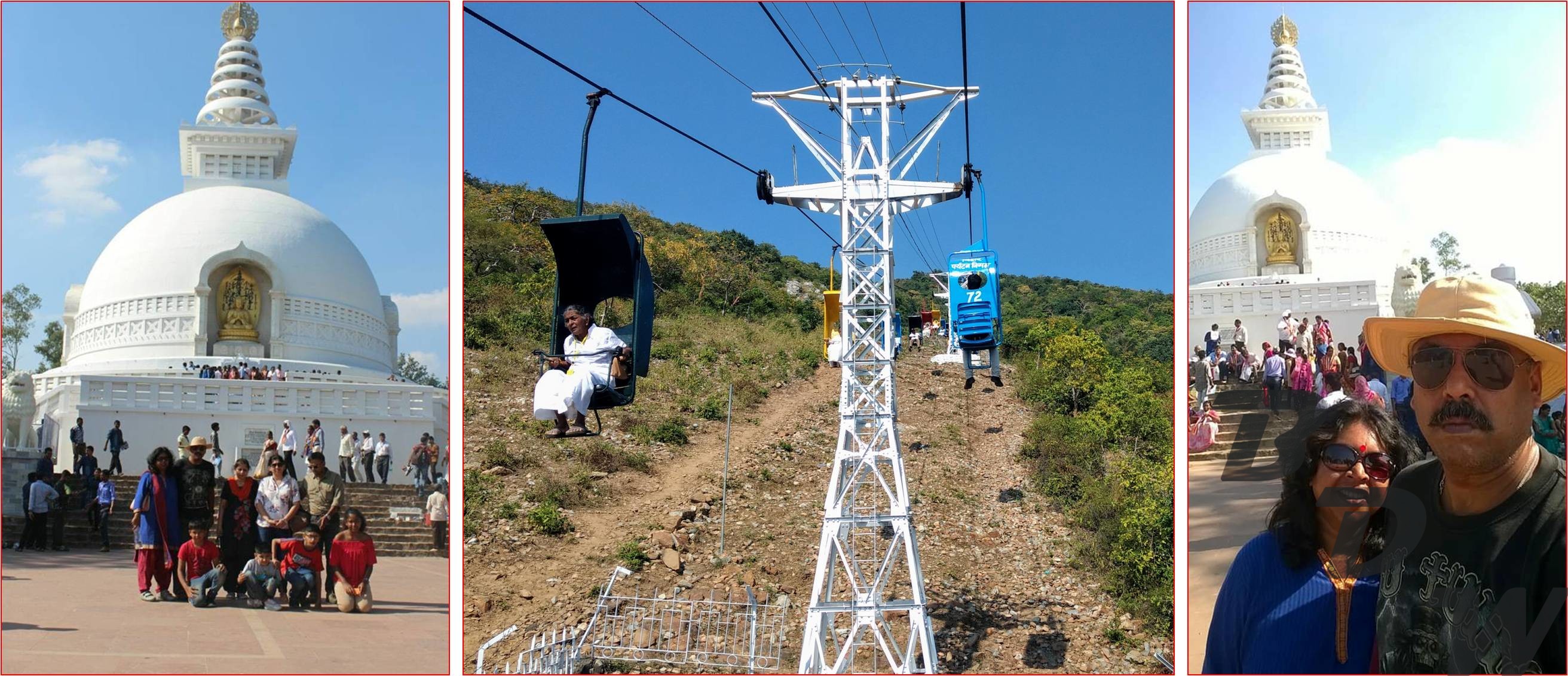
- Back Home safely after 987 km of weekend drive. Xylom never let’s me down.
2. With so much Motorcycling, I was thinking that I had lost mycutting edge driving skills. It took about 500 km to get onto my zone, in driving again. Some good music helps too.
3. Our neighborhood has history worth writing a library. It just sits waiting that someone will come with an open mind and absorb and feel.
4. This is #NOT_BIKER_CIRCUIT. Do not take your motorcycle, the roads and traffic is not worth talking. Car is a better option any day.
5. It’s wrong to generalize, but nevertheless, Bihar as a state has a lot to improve upon (don’t take it to heart Biharis, I am a Bihari-Bong myself). Road condition, traffic, attitude of people, discipline, Institutional development are things to focus on. It appeared to me that even West Bengal is better off in macro and especially micro development projects (this is only an opinion).
6. Grateful to the couple Sarvesh and Anuradha for their kind hospitality and taking us around the area. Will love to and looking forward to hosting you.
Signing off … Cheers, Peace, Live ..
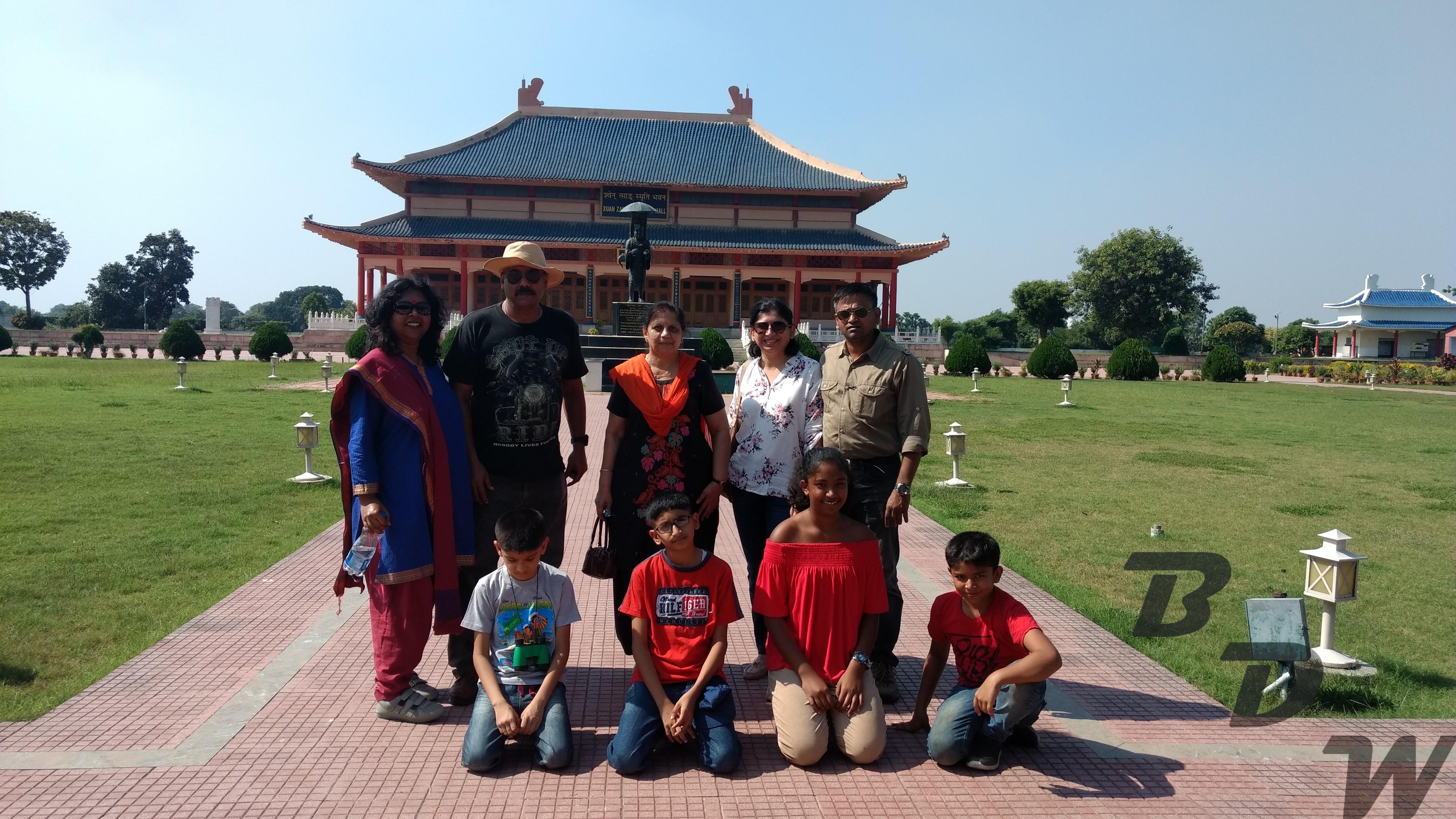


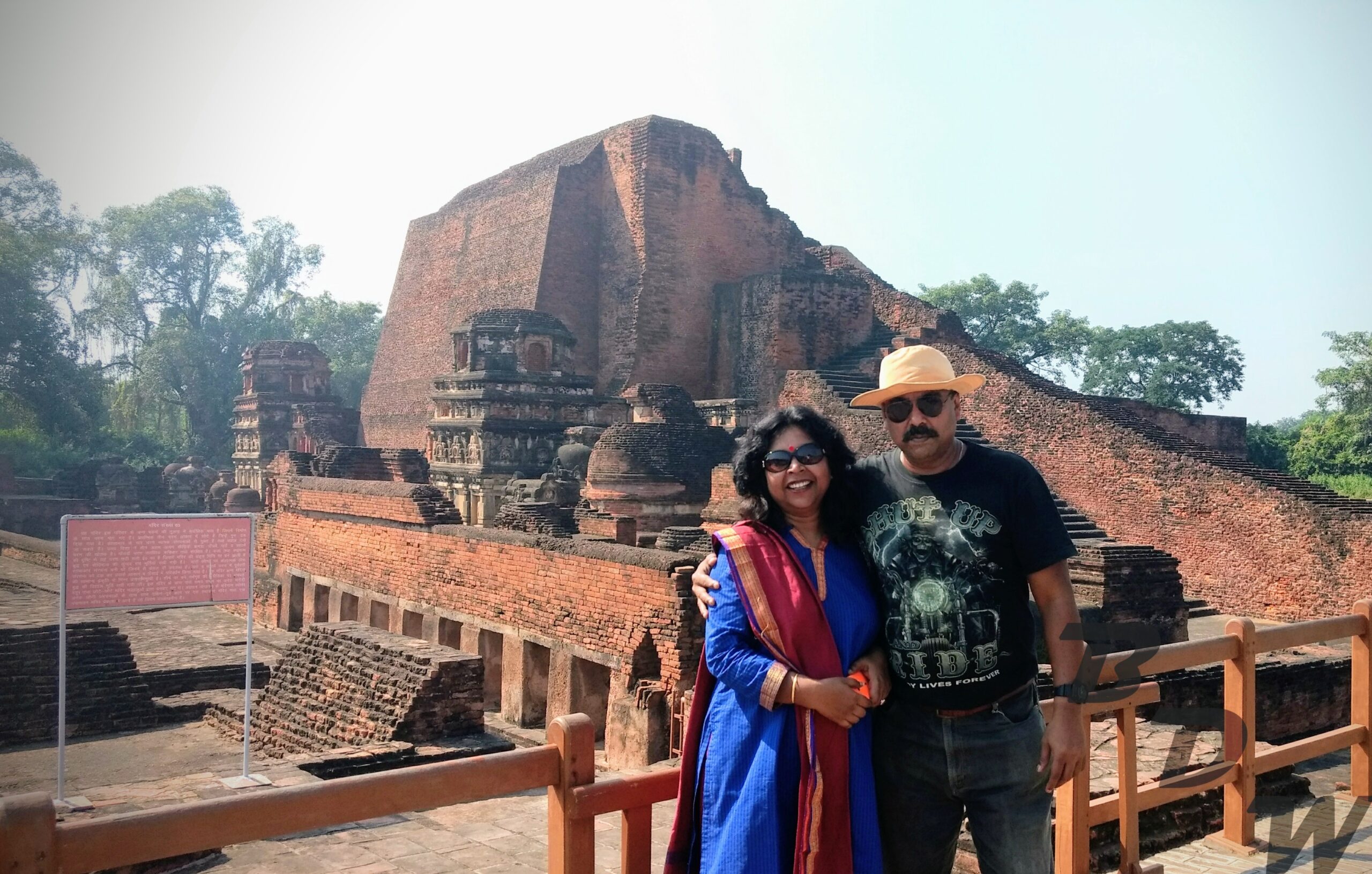

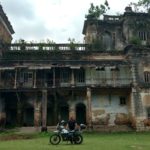
No Comment! Be the first one.